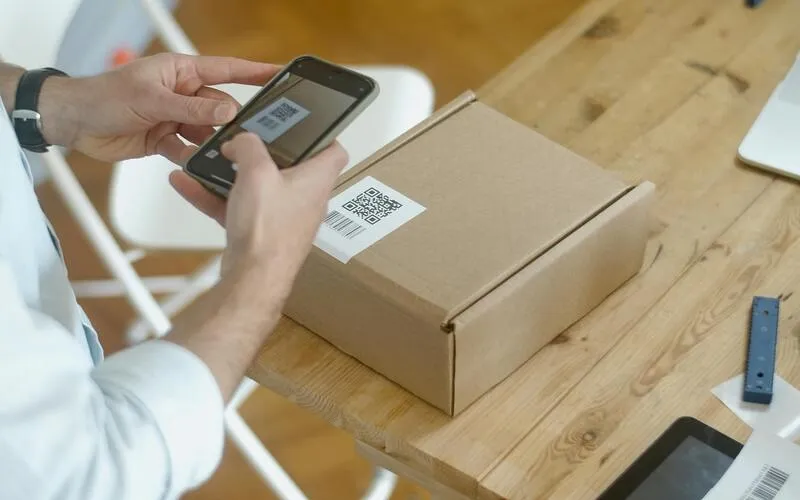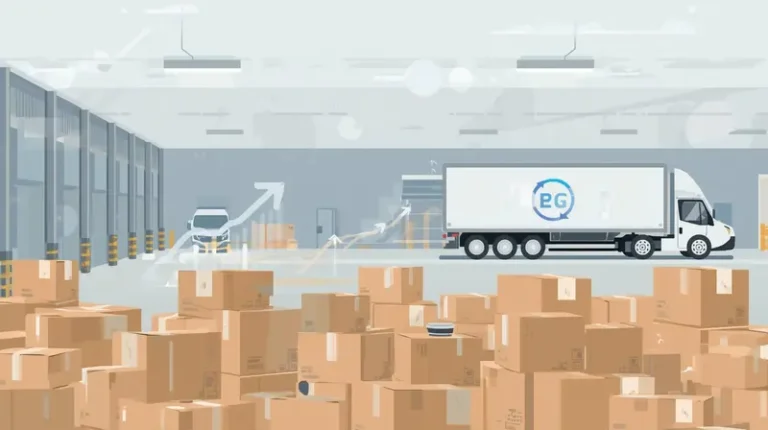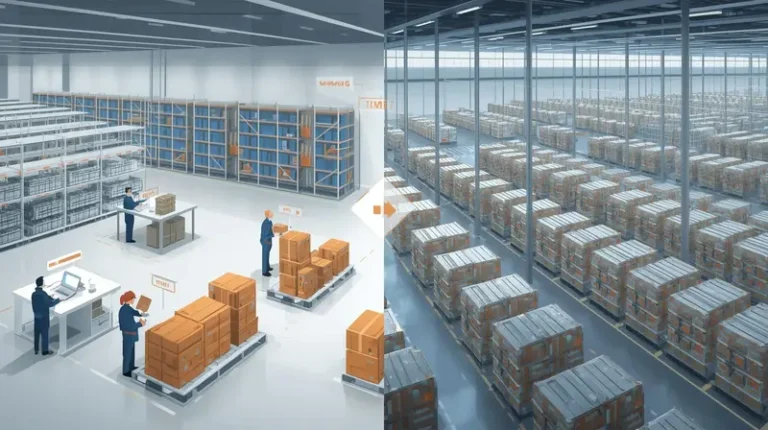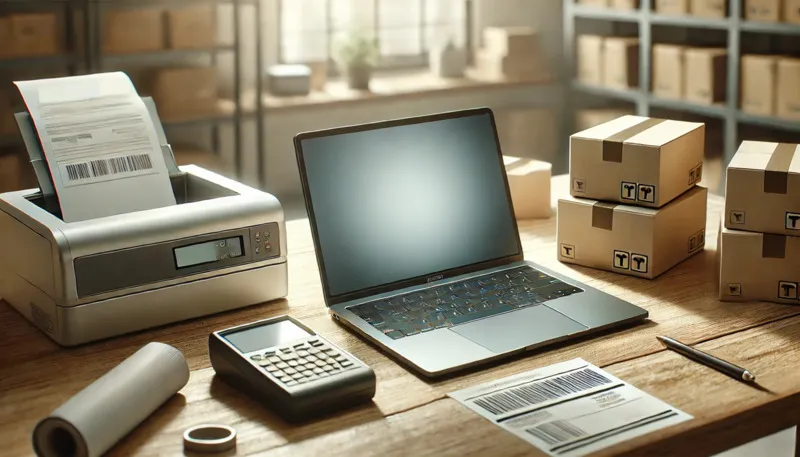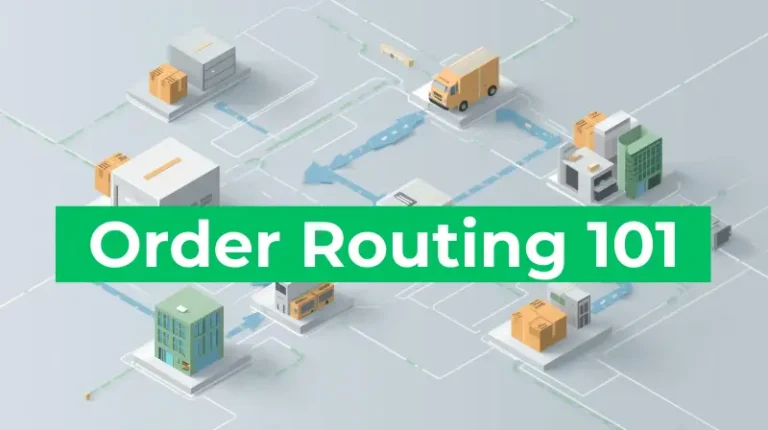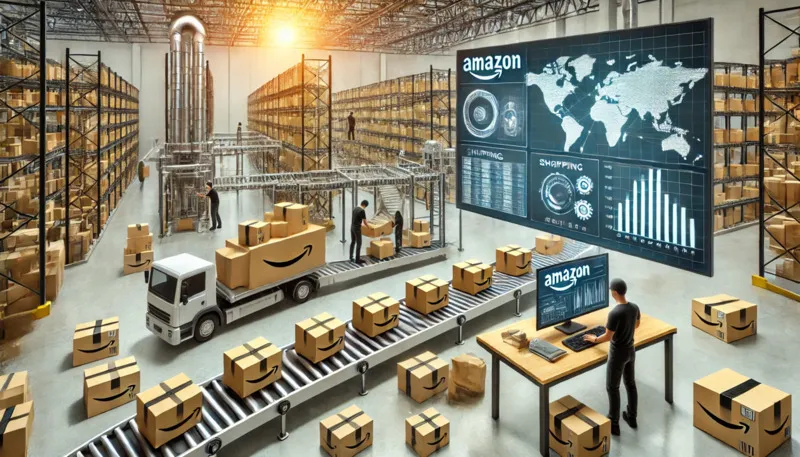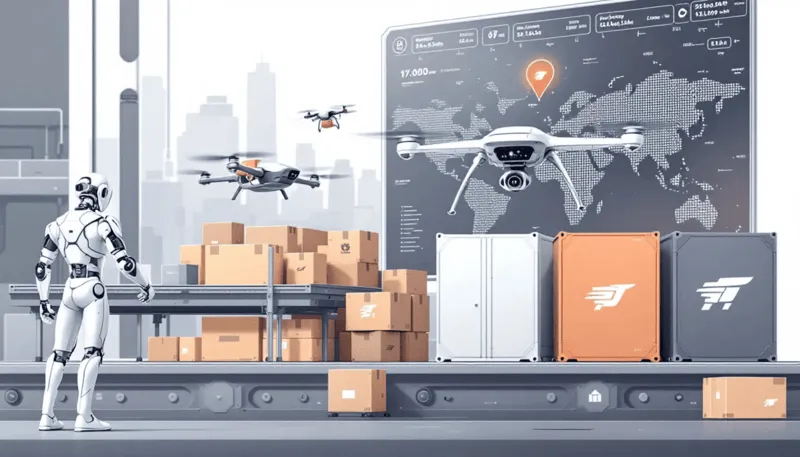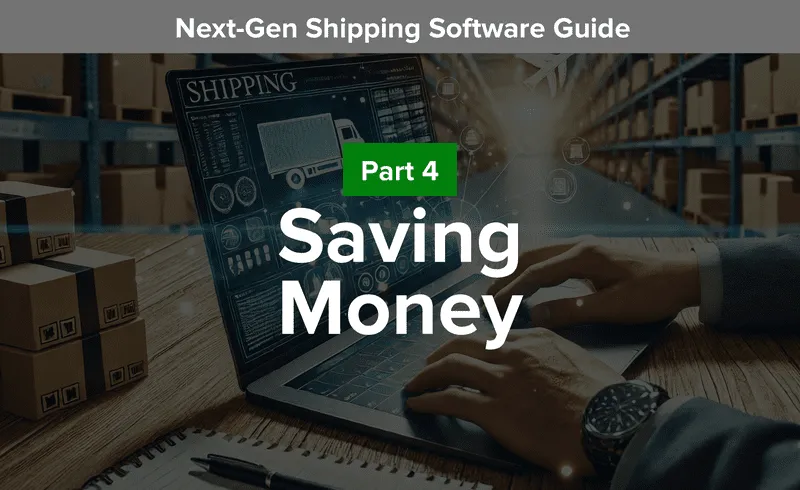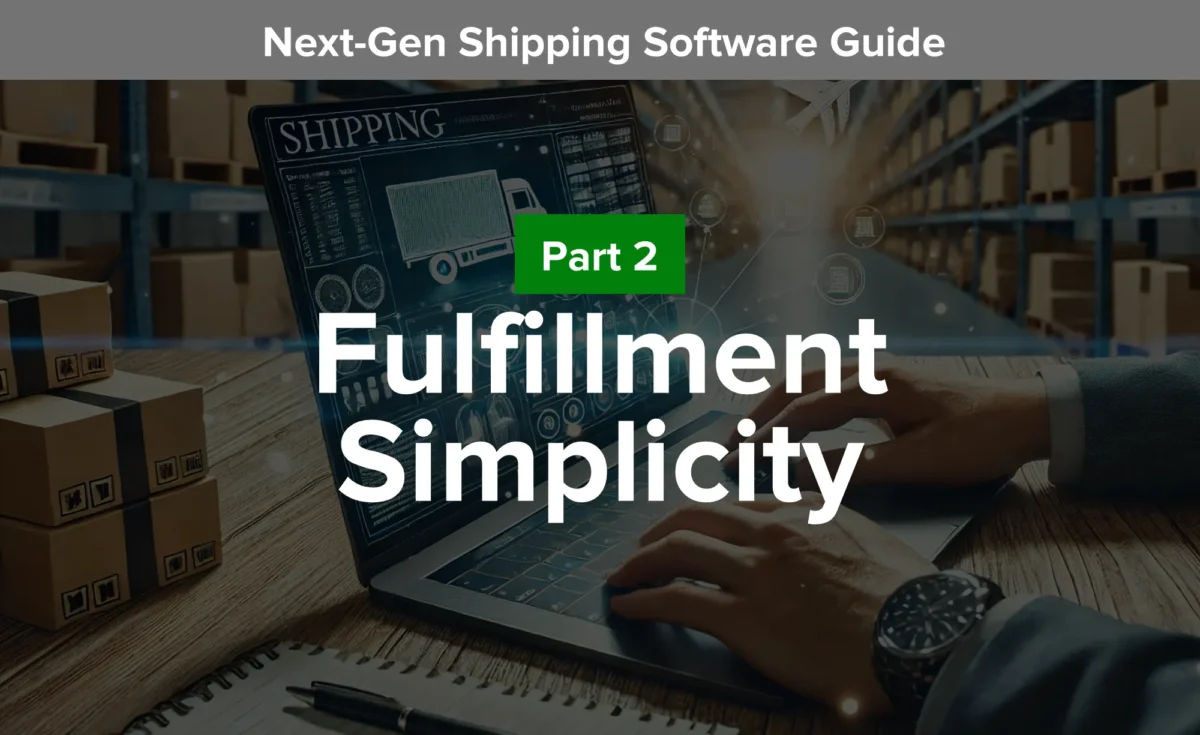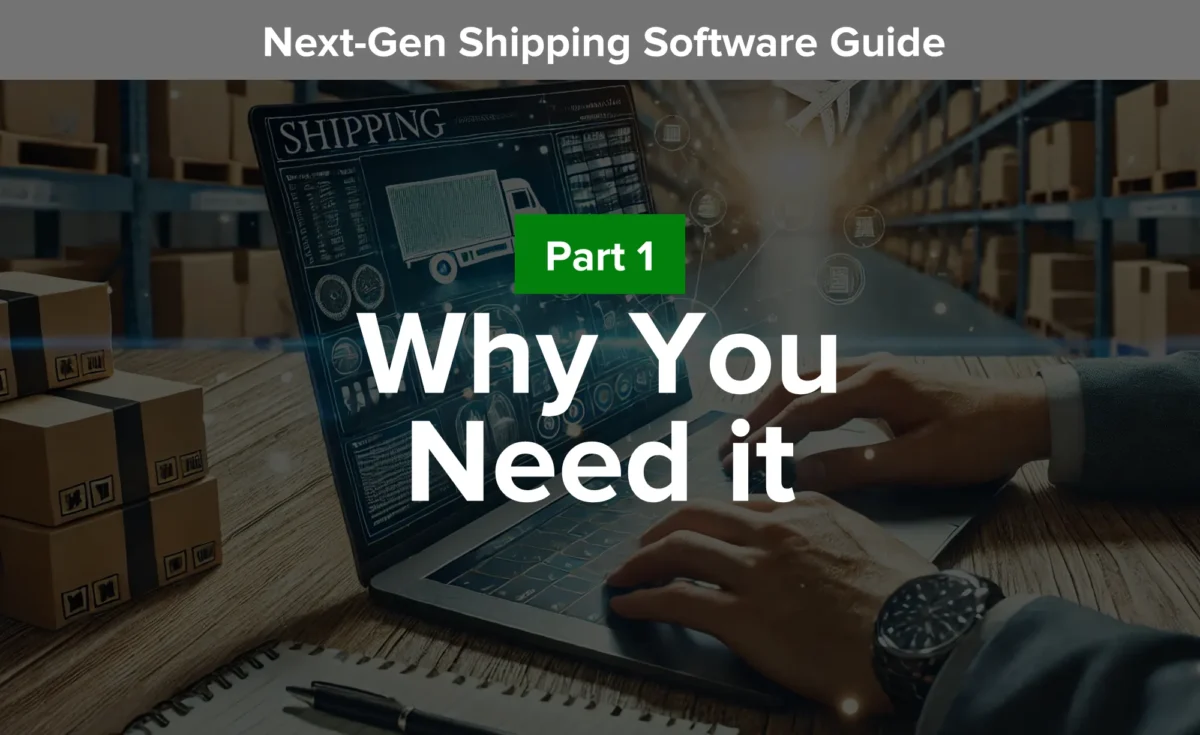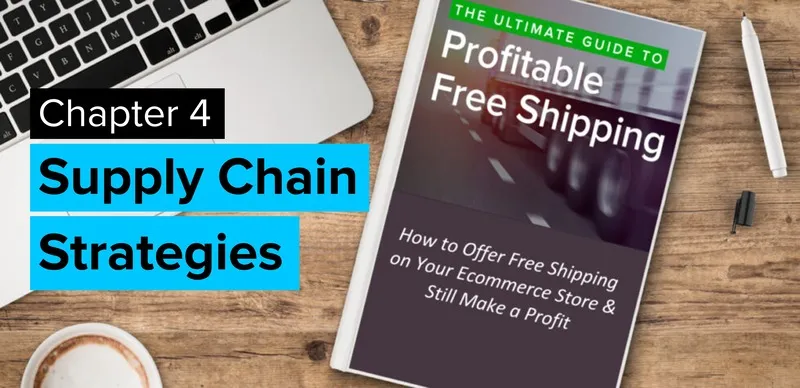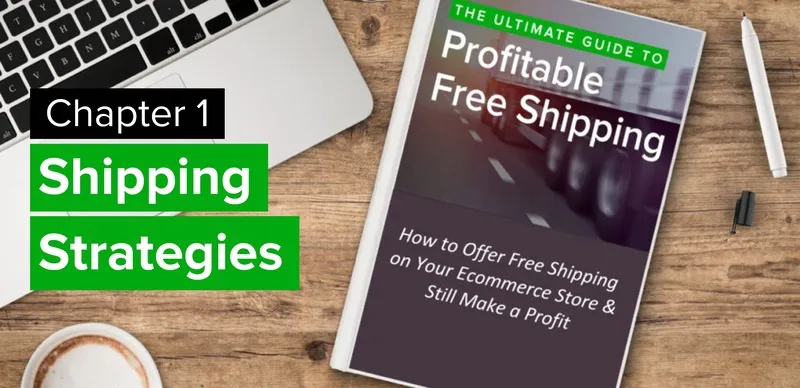How to Lower Shipping Cost Without Compromising Delivery Speed
In this article
 10 minutes
10 minutes
- The True Cost of Shipping
- Why Shipping Costs So Often Outpace Revenue
- Understanding What Drives Shipping Costs
- 1. Choose the Right Packaging
- 2. Use Multi-Carrier Rate Comparison
- 3. Negotiated & Volume Discounts
- 4. Flat Rate Shipping and Free Shipping Thresholds
- 5. Audit Invoices and Billing Discrepancies
- 6. Consider Regional and Hybrid Carriers
- 7. Optimize International and Cross-Border
- Leverage Shipping Technology and Software
- Delivering Excellent Customer Service Without Raising Costs
- Frequently Asked Questions
Shipping costs can feel like a runaway train; you want to slow them down, but not at the expense of your customers’ expectations. After a decade in ecommerce and fulfillment, I’ve seen brands slugged by one-size-fits-all shipping policies. When you treat shipping as a profit lever instead of pure cost, sudden wins emerge around shipping strategy, packaging choices, and carrier comparison.
Let’s break down exactly how you can cut shipping costs without slowing down delivery time or destroying customer trust.
Let AI Optimize Your Shipping and Boost Profits
Cahoot.ai software selects the best shipping option for every order—saving you time and money automatically. No Human Required.
See AI in ActionThe True Cost of Shipping
Shipping costs are more than just a line item; they can make or break your business’s profitability, especially for small businesses navigating the world of ecommerce. As online shopping continues to surge, finding the cheapest shipping method becomes a top priority for retailers looking to stay competitive. The true cost of shipping depends on several factors, including package weight, dimensions, and the destination. With so many shipping services and shipping options available, from USPS to UPS and FedEx, it’s essential to understand how different shipping rates and flat rate shipping options can impact your bottom line.
Savvy businesses know that the cheapest shipping isn’t always about cutting corners; it’s about making informed choices. By comparing carrier rates, leveraging flat rate shipping, and streamlining your shipping process with the right technology, you can save money without sacrificing speed or reliability. Whether you’re shipping a single package or managing bulk orders, understanding your options is the first step toward a more cost-effective shipping strategy.
Why Shipping Costs So Often Outpace Revenue
Between fuel surcharges, dimensional weight, and peak-season add-ons, your average shipping fee isn’t static; it’s a multi-headed beast. A Linnworks report (July 2025) found 40 % of retailers say shipping costs are their #1 headache—every overpaid label is money you can’t reinvest in growth.
Another silent killer? Lack of transparency. If your shipping zones and costs aren’t communicated clearly, expect cart abandonment or WISMO spikes. Unclear shipping costs can create confusion about product prices and the total order value, making customers question the final amount they’ll pay and eroding trust in your pricing. I’ve seen brands lose customers, not because shipping was slow, but because it was unpredictable.
Understanding What Drives Shipping Costs
Shipping costs are shaped by a mix of variables that can quickly add up if not managed carefully. The main drivers include package weight, dimensions, shipping zones, and the desired delivery speed. Each of these factors influences the shipping rate you’ll pay, and even small changes can lead to significant savings.
Using a multi-carrier shipping rate calculator is a smart way to determine the cheapest shipping rates for each order. Many businesses also take advantage of negotiated UPS, FedEx, and USPS discounts to reduce shipping costs on domestic shipments. Volume discounts and bulk shipping can further cut shipping costs, especially if you consistently ship large quantities.
To maintain steady shipping costs, it’s important to develop a shipping strategy that leverages discounted shipping rates and prioritizes the cheapest shipping options for each order. By understanding how shipping zones, package size, and weight affect your shipping rate, you can make informed decisions that help you cut shipping costs while still meeting your customers’ delivery speed expectations.
1. Choose the Right Packaging
Packaging choice directly affects dimensional weight pricing. DIM weight charges by space (cubic volume), not actual weight.
Focusing on:
- Package dimensions: even 2–3 extra inches matters.
- Packaging materials: polybags or bubble mailers can cut waste and weight. Bubble wrap is a lightweight packing material that cushions fragile items and fills empty space, helping protect products during shipping and reducing costs.
- Custom vs standard: custom packaging sized close to your product dimensions may cost more in some cases, but can reduce damages, improve efficiency, and lead to cost savings. Some carriers also offer free packaging options, which can further reduce costs.
Selecting the right packing supplies, such as poly mailers, envelopes, tape, and bubble wrap, minimizes shipping costs and improves efficiency.
One Shopify guide from June 2025 shows USPS flat-rate boxes are often the fastest and cheapest shipping method for common 2–3 day parcels.
To further reduce package weight, use smaller boxes and lightweight materials whenever possible.
2. Use Multi-Carrier Rate Comparison
USPS might be cheapest for small items; UPS or FedEx might beat them on heavier ones. That’s why it’s important to compare carriers, including major carriers like USPS, UPS, and FedEx, for each shipment to ensure you get the best rates.
Rate-shopping software (like Cahoot and Shippo) can automate comparisons:
- Provide instant access to live shipping rates from multiple major carriers
- Auto-select the cheapest shipping rates that still meet your delivery expectations
- Print shipping labels with no manual switching
On Reddit, a Shopify merchant wrote:
“USPS cubic rates are the cheapest for most of our 1–10 lb items. UPS only wins on heavy boxes.”
That’s the power of dynamic rate-shopping: your checkout becomes a mini-negotiator. The Linnworks report specifically called rate-shopping one of the top 6 ways to slash shipping costs this year.
3. Negotiated & Volume Discounts
If you ship over minimum volumes, you can tap into discounted shipping rates. Many carriers have minimum volume requirements to qualify for discounted rates and shipping discounts, so small businesses need to be aware of these thresholds to access lower prices. UPS/FedEx both offer volume-based tiers, but only if you hit those thresholds.
Platforms like Easyship and Cahoot offer collective volume discounts to small brands, helping you access cheaper shipping rates by pooling shipments to meet minimum volume requirements. This allows small businesses to benefit from shipping discounts and discounted rates that would otherwise be unavailable.
Even USPS has programs like USPS Ground Advantage and Media Mail, which often beat UPS and FedEx on low-weight but non-time-sensitive parcels.
Negotiating directly with carriers or using shipping platforms is key to unlocking discounted rates and shipping discounts for your business.
4. Flat Rate Shipping and Free Shipping Thresholds
Flat-rate shipping options, such as USPS Priority Mail Flat Rate boxes, offer predictable pricing and come with free packaging, which adds meaningful additional savings per shipment.
Use them wisely:
- Offer free shipping only over an AOV threshold that covers your average shipping cost.
- Use flat-rate only when it’s actually cheaper than the carrier quote.
Shopify and Linnworks agree: stacking a free shipping threshold can increase AOV, spreading fixed shipping costs across more items.
ShipStation vs. Cahoot: 21x Faster, Real Results
Get the inside scoop on how a leading merchant switched from ShipStation to Cahoot—and what happened next. See it to believe it!
See the 21x Difference5. Audit Invoices and Billing Discrepancies
Ever audit your carrier invoices? One audit uncovered thousands in refunds due from carrier overcharges, like charges for “Paper Commercial Invoice Service” that were mistakenly added for every international shipment.
Implement a quarterly invoice audit or use software that flags:
- Fuel surcharge changes
- Dimensional weight mischarges
- Paper invoice fees
You’d be surprised how costs can shrink overnight.
6. Consider Regional and Hybrid Carriers
Large carriers may not always win. A HubBox case study shows that using local pickup saved up to 25 % per order, while increasing delivery speed.
Plus, regional carriers often have fewer additional fees or surcharges. Pair them with USPS for last-mile and you get competitive rates that keep delivery costs low and on-time delivery high.
7. Optimize International and Cross-Border
If you’re shipping globally, factors like duties and fees matter, but international shipping costs also kill margins if unmanaged. Linnworks flags this as a top 3 challenge for 2025. Finding cost-effective solutions for international shipments is essential for maintaining profitability and customer satisfaction.
Solutions:
- Pre-calculate duties and taxes at checkout
- Use DDP or prepaid customs
- Use a shipping tool that shows most shipping carriers for international lanes
- Consider expedited or optimized shipping methods to offer faster shipping for international customers
Segment international orders differently. Don’t treat them like domestic, or you’ll lose 10–20 % to surprise fees and abandoned carts.
Leverage Shipping Technology and Software
Modern shipping technology and software are game-changers for businesses aiming to reduce costs and streamline their shipping process. With the right shipping software, you can easily compare carrier rates, print shipping labels, and track shipments, all from a single dashboard. This not only saves time but also ensures you’re always getting the cheapest shipping rates available.
Services like USPS Ground Advantage and USPS Priority Mail offer competitive rates and fast delivery times, making them excellent choices for businesses that need to balance cost and speed. Shipping rate calculators built into these platforms help you identify the most cost-effective shipping services for each package, whether you’re sending lightweight parcels or heavier shipments.
Automating your shipping process with software reduces manual data entry, minimizes errors, and allows you to print shipping labels instantly. By integrating these tools into your workflow, you can reduce costs, improve delivery times, and provide a seamless shipping experience for your customers, all while staying ahead of the competition.
Cut Costs with the Smartest Shipping On the Market
Guranteed Savings on EVERY shipment with Cahoot's AI-powered rate shopping and humanless label generation. Even for your complex orders.
Cut Costs TodayDelivering Excellent Customer Service Without Raising Costs
Providing top-notch customer service doesn’t have to mean higher shipping expenses. By leveraging shipping technology and adopting a smart shipping strategy, you can offer fast, reliable shipping options that delight customers without straining your budget. Setting a free shipping threshold encourages larger orders, helping to offset shipping costs while meeting customer expectations for free shipping.
Choosing the right packaging materials and considering shipping insurance can further enhance the customer experience, ensuring products arrive safely and on time. Data and analytics tools can help you fine-tune your shipping strategy, identifying opportunities to reduce costs and improve delivery times.
Remember:
1. Shipping costs and delivery speed don’t have to trade off; smart packaging, rate-shopping, and audit discipline let brands cut costs and keep promises.
2. Dimensional weight is a stealth margin-killer: shrink boxes, and you shrink costs.
3. Rate comparisons = real negotiating power: small brands can access big discounts when they shop across carriers.
4. Oversight matters: invoices are full of surprise charges, but an audit saves the net margin.
5. Customer expectations shape cost: free shipping succeeds when paired with transparency, and funds future scalability.
Ultimately, the key is to align your shipping options with customer expectations, offering the speed and reliability they want, while using cost-effective solutions to protect your margins. With the right approach, you can deliver excellent customer service and maintain a healthy bottom line.
Frequently Asked Questions
What is the cheapest shipping method for small ecommerce items?
USPS typically offers the cheapest shipping rates for lightweight parcels (under 10 lb), especially using USPS First-Class or USPS Priority Mail Flat Rate boxes. Compare rates using a shipping rate calculator like Cahoot.
How do I reduce dimensional weight charges?
Use right-sized packaging materials, minimize empty air space, and choose polybags or bubble mailers for lightweight products. Dimensional weight pricing applies when package volume exceeds actual weight.
Can small businesses get discounted shipping rates?
Yes, through negotiated volume discounts, or by using 3PL/4PLs or shipping platforms that pool volume. Many offer discounted shipping rates for brands shipping over minimum volumes.
Does offering free shipping hurt margins?
Not if your free shipping threshold is above average shipping cost, and if the checkout communicates savings clearly. Customers often spend more to qualify, and you lock in larger orders.
Should I audit my shipping invoices?
Absolutely. Carriers frequently include unexpected surcharges, and they’re not immune to billing errors. Regular audits (or software) can identify and help recover overcharges like fuel surcharges or incorrect invoice fees.

Turn Returns Into New Revenue
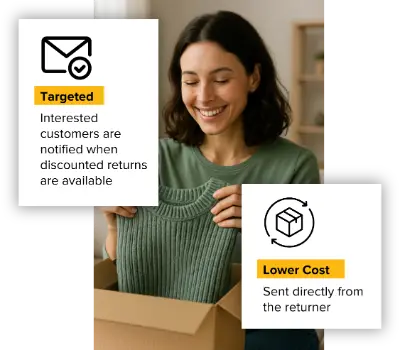
Best Shipping Software: A Complete Guide to Features, Benefits, and Choosing the Right Solution
In this article
 10 minutes
10 minutes
- What Is Shipping Software?
- What Differentiates One Shipping Software from Another?
- Key Features of the Best Shipping Software
- Benefits of Using Shipping Software
- Ecommerce Store Integration and Automation
- Carrier Rates and Discounts
- Pros and Cons of Using Shipping Software
- How to Choose the Best Shipping Software for Your Business
- Final Thoughts
- Frequently Asked Questions
Efficiency in ecommerce shipping operations can make or break a business. With today’s customer expectations, businesses must ensure fast, reliable, and cost-effective deliveries. This is where shipping software can help. But with so many options available, how do you determine the best shipping software for your business?
In this guide, we’ll break down what shipping software is, what differentiates them from one another, the essential features to look for, the benefits of using one, the pros and cons to consider before making a selection, and how to choose shipping software tailored to your business needs.
What Is Shipping Software?
Shipping management software is a digital solution designed to streamline and optimize shipment management, from order fulfillment to delivery. It integrates with carriers, ecommerce platforms, and order and inventory management systems to automate shipping label creation and printing, rate comparison, tracking, and returns, ensuring that businesses can handle shipping operations efficiently and cost-effectively.
Whether you run an online store, a warehouse, or a fulfillment center, shipping management software helps you manage high-volume shipments with ease while reducing errors, improving delivery times, and ensuring a positive customer experience.
What Differentiates One Shipping Software from Another?
Not all shipping software is created equal. Some are built specifically for small businesses, while others are designed for enterprise-level logistics. Here’s what sets them apart:
- Integration Capabilities – Some software solutions work best with specific platforms like Shopify, WooCommerce, or Amazon, while others offer multi-channel integrations for businesses operating across multiple platforms.
- Carrier Support – Certain software tools partner with a select few carriers, while others provide multi-carrier support for hundreds of carriers worldwide. Considering multi-carrier shipping software allows small and medium-sized businesses to compete against larger players by making rate shopping and delivery speed analysis across different providers accessible.
- Automation Features – Some shipping solutions focus on automated workflows, helping businesses print labels in bulk, send automated tracking updates, and apply custom shipping rules based on order details.
- Scalability – Enterprise-level solutions offer advanced analytics, AI-driven decision-making, and warehouse management features, whereas smaller solutions might focus on cost-effectiveness and simplicity.
- Customization & User Experience – Some businesses require highly customizable workflows, while others prefer an easy-to-use interface with plug-and-play features.
Choosing the right software depends on the unique needs of your business, including your order volume, shipping destinations, preferred carriers, and technology stack.
Let AI Optimize Your Shipping and Boost Profits
Cahoot.ai software selects the best shipping option for every order—saving you time and money automatically. No Human Required.
See AI in ActionKey Features of the Best Shipping Software
To determine which shipping software is best for your business, start by evaluating various shipping software options tailored to your specific needs. Look for the following must-have features:
1. Multi-Carrier Rate Shopping
Shipping costs can vary significantly across carriers. The best software allows you to compare rates in real-time, ensuring you get the most cost-effective option without compromising delivery speed.
2. Automation & Bulk Processing
Manually processing hundreds or thousands of orders is time-consuming and a poor use of resources. Look for software that offers bulk label creation and printing, automatic carrier selection, and preset shipping rules to streamline your operations.
3. Order Management & Tracking
The ability to sync orders from multiple sales channels and track shipments in real time is essential. Many shipping platforms offer customer-facing tracking tools and automated email or SMS updates. Additionally, these platforms often support international shipping, enabling businesses to expand their market reach by managing logistics, calculating tax and duty costs, and preparing necessary customs documentation.
4. Address Validation & Error Reduction
Incorrect addresses lead to failed deliveries and costly reshipments and/or cancelled orders. Advanced software provides address validation to minimize errors and prevent shipping delays.
5. International Shipping & Returns Management
A smooth returns process is critical for customer satisfaction. Top shipping software includes automated return labels, customer-friendly return portals, and tracking capabilities for returned goods.
6. Shipping Analytics & Reporting
Understanding your shipping costs and performance is crucial. The best tools provide detailed analytics, cost breakdowns, and carrier performance reports to help optimize logistics decisions.
7. Integration with Ecommerce & Accounting or ERP Systems
For seamless operations, your shipping software should integrate with your ecommerce platform (e.g., Shopify, Adobe Commerce, Pulse Commerce, WooCommerce), marketplace (e.g., Amazon, eBay, TikTok Shop), and accounting or ERP systems to ensure smooth order fulfillment.
8. Custom Branding & Shipping Labels
Businesses looking for brand recognition should look for software that allows customized packing slips, branded tracking pages, and personalized notifications to engage the shopping audience.
Benefits of Using Shipping Software
1. Cost Savings on Shipping Rates
By accessing discounted carrier rates and comparing many options for each shipment, businesses can significantly reduce shipping costs, resulting in higher profit margins. Additionally, evaluating free shipping software versus paid options can help small businesses understand long-term cost implications and potential hidden costs, ensuring they choose the best solution to drive revenue effectively.
2. Improved Efficiency & Time Savings
Automating tedious tasks like label generation, tracking, and bulk processing helps businesses save hours of manual work, allowing them to focus on growth and customer service.
3. Enhanced Customer Experience
Providing customers with accurate tracking, estimated delivery dates, and easy return options improves satisfaction and fosters brand loyalty.
4. Reduced Human Errors
Mistakes in shipping can be costly. Features like address verification, automation, and real-time tracking help minimize human errors that lead to delivery failures.
5. Scalability for Business Growth
As businesses grow, handling increasing order volumes manually becomes impossible. Shipping software scales with demand, ensuring smooth operations as your company expands.
ShipStation vs. Cahoot: 21x Faster, Real Results
Get the inside scoop on how a leading merchant switched from ShipStation to Cahoot—and what happened next. See it to believe it!
See the 21x DifferenceEcommerce Store Integration and Automation
Importance of Seamless Integration with ecommerce Platforms
Seamless integration between your shipping software and ecommerce platform is not just a luxury—it’s a necessity. When your shipping software integrates effortlessly with platforms like Shopify, WooCommerce, and BigCommerce, it transforms your shipping workflow into a well-oiled machine. Technology integrations allow you to automate shipping workflows, print shipping labels, and track shipments directly from your ecommerce platform, significantly reducing the risk of manual errors. The result? A streamlined shipping process that saves you time and makes your customers happy. By eliminating the need for manual data entry and reducing the chances of errors, you can focus more on growing your business and less on the nitty-gritty of shipping logistics.
Automating Shipping Workflows for Enhanced Efficiency
Automation is the cornerstone of efficient shipping management. With the right shipping software, you can automate a myriad of tasks, from printing shipping labels to sending tracking updates and updating order statuses. Imagine setting up shipping rules based on weight, dimensions, and destination, ensuring that each order is shipped using the most cost-effective and timely method every time. Why re-enter the same shipment weights and dimensions for the same products over and over again? Solutions like Cahoot remember the data you entered the first time and use it to automatically rate shop and create a label using the same data in perpetuity. This level of automation not only supercharges productivity and reduces manual errors but also boosts productivity. By automating your shipping workflows, you can handle higher order volumes with ease, reduce shipping costs, and provide a seamless experience for your customers. In essence, automation transforms your shipping process from a potential bottleneck into a competitive advantage.
Carrier Rates and Discounts
Understanding and Negotiating Carrier Rates for Better Deals
Shipping costs can significantly impact your bottom line, making it crucial to understand and negotiate carrier rates effectively. Shipping software plays a pivotal role in this process by allowing you to compare rates from various carriers, negotiate discounts, and optimize your shipping costs. By analyzing your shipping data, you can identify patterns and areas where you can negotiate better rates with carriers. Additionally, many shipping software solutions provide access to discounted shipping rates, further reducing your shipping costs. This not only improves your profitability but also allows you to offer competitive shipping options to your customers. In an industry where every dollar counts, leveraging shipping software to secure the best rates can make a substantial difference to your business’s financial health.
Pros and Cons of Using Shipping Software
Cut Costs with the Smartest Shipping On the Market
Guranteed Savings on EVERY shipment with Cahoot's AI-powered rate shopping and humanless label generation. Even for your complex orders.
Cut Costs TodayHow to Choose the Best Shipping Software for Your Business
With so many options available, choosing the right shipping software requires careful consideration. Here are a few key factors to help you decide:
- Business Size & Order Volume – Small businesses might need a user-friendly, budget-friendly solution, while enterprises require scalable, feature-rich software.
- Carrier Preferences – Ensure the software supports your preferred carriers and offers the best rates. Consider solutions that integrate with the United States Postal Service for cost-effective shipping, especially for small businesses.
- Automation Needs – If handling a high volume of orders, choose software with workflow automation, bulk processing, and smart routing features.
- Integration Requirements – Confirm compatibility with your ecommerce platform, inventory management system, and accounting or ERP software.
- Budget Considerations – Compare pricing structures, including monthly fees, per-label costs, and any hidden fees to ensure it fits your budget.
- Customer Support & Reliability – Look for solutions with strong customer support, reliability, and security features to ensure smooth operation.
Final Thoughts
The best shipping software is the one that fits your business’s specific needs, whether that means cost-effective shipping rates, automation, seamless integrations, or enterprise-level scalability. By carefully assessing your shipping volume, carrier preferences, and automation needs, you can select a platform that optimizes your fulfillment workflow, enhances customer experience, and maximizes profitability.
Investing in the right shipping software is a strategic decision that can lead to significant time and cost savings, making your shipping operations smoother and more efficient. Whether you’re a growing ecommerce brand or a large-scale fulfillment center, the right software can help streamline logistics and improve bottom-line results.
Now, it’s time to assess your shipping challenges and find the software that best supports your business goals! Reach out to learn more.
Frequently Asked Questions
What factors should I consider when choosing shipping software?
Look for features such as multi-carrier rate shopping, automation capabilities, order tracking, seamless ecommerce integrations, and cost-effectiveness. Consider your business size, shipping volume, and customer needs to find the best fit.
How does shipping software help reduce costs?
Shipping software compares carrier rates in real-time, provides bulk shipping discounts, and automates workflows to reduce manual labor. Some platforms also offer negotiated rates that can significantly cut down shipping expenses.
Is free shipping software a good option for small businesses?
Free shipping software can be a great starting point for small businesses, but they may have limitations in features, integrations, or carrier options. Evaluate long-term scalability and hidden costs before deciding.
Can shipping software handle international shipping?
Yes, many shipping solutions offer international shipping support, including customs documentation, duty calculations, and multi-carrier options. Ensure the software integrates with global carriers for seamless cross-border logistics.
What are the biggest challenges when implementing shipping software?
Common challenges include software integration with existing systems, learning curves for employees, upfront costs, and carrier limitations. Choosing a user-friendly solution with strong customer support can ease the transition.

Turn Returns Into New Revenue

Ecommerce Shipping Software: Top Benefits of Using Shipping Software in 2025
In this article
 12 minutes
12 minutes
- Key Takeaways
- Why Use Ecommerce Shipping Software?
- How to Choose the Right Shipping Software for Your Business
- Enhancing Customer Experience with Shipping Software
- International Shipping Considerations
- Leveraging Analytics and Reporting
- Security and Compliance in Shipping Software
- Cahoot Ecommerce Shipping Software Solution
- Summary
- Frequently Asked Questions
Ecommerce shipping software automates crucial shipping tasks for online retailers, promoting efficiency and reducing costs. In this article, we’ll review the top 8 ecommerce shipping software solutions for 2025 and explore how they can improve your shipping process and customer satisfaction.
Key Takeaways
- Ecommerce shipping software automates the order fulfillment process, improving efficiency and reducing costs for online retailers.
- Key features to consider when selecting shipping software include integration capabilities, multi-carrier support, real-time tracking, and automated label creation and printing.
- Effective shipping solutions not only enhance customer satisfaction through timely deliveries and streamlined returns management but also provide valuable analytics for optimizing shipping operations.
Why Use Ecommerce Shipping Software?
Ecommerce shipping software automates and manages the order fulfillment process, making it indispensable for online retailers. These solutions streamline operations involved in freight delivery, such as searching for carriers, printing shipping labels, comparing shipping rates, and tracking shipments.
The right shipping software not only improves efficiency but also reduces costs, providing transparency in shipping expenses and ensuring reliable delivery.
Key Features to Look For
When evaluating ecommerce shipping software, consider the following key features:
- Integration capabilities: Seamless connections with various ecommerce platforms and sales channels ensure smooth data flow and reduce manual data entry and errors stemming from obsolete data.
- Multi-carrier support: This allows businesses to choose from a variety of shipping carriers and services, providing flexibility and adaptability to different needs.
- Real-time tracking: Offers updates and notifications regarding shipment status, providing transparency for both retailers and customers.
- Automated label creation and printing: Streamlines shipping workflows and allows for customization options that align with brand identity.
By focusing on these features, you can select the best ecommerce shipping software for your business needs.
The ideal shipping software should offer a clean and user-friendly interface that allows businesses to choose shipping software to manage shipping tasks with just a few clicks. Some platforms even provide a free plan, making them accessible to businesses of all sizes. These features ensure that the software is not only effective but also easy to implement and use, contributing to overall operational efficiency.
Benefits for Online Retailers
Ecommerce shipping software offers significant benefits for online retailers. One of the primary advantages is cost efficiency. By optimizing carrier selection, these solutions help reduce shipping expenses, positively impacting profit margins. Streamlined shipping workflows speed up the packing and dispatching process, saving time and reducing errors. This automation is particularly beneficial for small businesses, enabling them to meet growing customer demands while maintaining efficiency.
In addition to reducing costs, shipping software can provide exclusive shipping discounts and instant savings to reduce shipping costs, further enhancing profitability. These platforms often integrate with multiple carriers, offering discounted shipping rates that are not available through direct negotiations.
Ecommerce shipping solutions improve operational efficiency and offer better shipping options. These boost customer satisfaction and retention, contributing to a more successful online store.
Let AI Optimize Your Shipping and Boost Profits
Cahoot.ai software selects the best shipping option for every order—saving you time and money automatically. No Human Required.
See AI in ActionHow to Choose the Right Shipping Software for Your Business
Choosing the right ecommerce shipping solution involves understanding your business model and specific needs. Key considerations include integration capabilities, scalability, and cost.
You’ll want to select software that meets your operational requirements and promotes peak efficiency, ultimately boosting customer satisfaction by meeting the expectations set during checkout.
Assessing Your Shipping Volume
Matching your shipping software’s capabilities with your shipping volume is essential for managing fluctuations during peak seasons or as your business scales. Many shipping solutions offer tiered pricing based on volume, significantly affecting overall shipping expenses. For businesses with high order volumes, features like bulk label printing can simplify the shipping process and save significant amounts of time.
As sales volume increases, inefficiencies in manual shipping processes become more pronounced, making it necessary to use advanced tools for processing hundreds or thousands of orders a day. Choosing software that can scale with your shipping volume ensures that you can handle seasonal spikes or consistent growth without compromising efficiency.
Evaluating Integration Capabilities
Integration with ecommerce platforms and carriers is crucial for smooth data flow and reducing manual data entry that leads to expensive errors. Solutions that support comprehensive carrier integrations, for example, provide flexibility that allows businesses to access multiple delivery options, compare real-time shipping rates, and create the best service level agreements for shipments. Choosing shipping software that easily connects with other applications can streamline processes and improve overall performance.
Comparing Costs and Discounts
When selecting shipping software, it’s essential to compare costs and look for exclusive shipping discounts. Real-time carrier rates allow businesses to quickly compare shipping costs from different providers, ensuring the best deal for each shipment. Platforms like Cahoot and Easyship provide access to pre-negotiated shipping rates, enabling cost savings for users that are unattainable otherwise. Detailed reports on Shipment Insights (claims, damages, and carrier performance) can help businesses identify cost-saving opportunities and make data-driven decisions to optimize their shipping strategy.
Enhancing Customer Experience with Shipping Software
Improving customer satisfaction through timely deliveries is a key advantage of utilizing ecommerce shipping software. These platforms enhance the delivery experience by providing timely updates on shipping statuses and reducing inquiry volumes.
Features like real-time tracking and streamlined returns management play a significant role in boosting customer satisfaction and retention.
Real-Time Tracking and Notifications
Real-time tracking features in shipping software enable customers to monitor their package status throughout the delivery process. This transparency is central to reducing customer anxiety and improving overall satisfaction. Automated notifications provide timely updates about order status, ensuring that customers are always informed about their shipments.
Effective shipping software should offer branded tracking communications, enhancing the customer experience by aligning with the business’s brand identity, while offering the ability to promote other offerings along with discounts for future purchases. Real-time updates also help streamline order imports and inventory management, ensuring that businesses can meet customer expectations with greater accuracy and efficiency.
ShipStation vs. Cahoot: 21x Faster, Real Results
Get the inside scoop on how a leading merchant switched from ShipStation to Cahoot—and what happened next. See it to believe it!
See the 21x DifferenceStreamlined Returns Management
Streamlined returns management is another critical feature of effective shipping software. An integrated returns portal allows businesses to manage return requests efficiently, ensuring prompt customer refunds and improving the overall customer experience. Shipping software should include automation functionalities like a self-serve return portal, return tracking updates, and refund automation to enhance efficiency and customer retention.
Efficient returns management not only simplifies the process for customers but also aids merchants in recovering value from returned goods. By offering features such as branded tracking pages and the capability for customers to generate return labels quickly, shipping software can make the returns process less cumbersome and more user-friendly. Modern ecommerce shipping software offers peer-to-peer returns to save merchants nearly 70% of the reverse logistics costs while supporting sustainability.
International Shipping Considerations
Navigating the complexities of international shipping requires robust ecommerce shipping solutions that support global carrier integration and customs generation. Effective international shipping strategies are essential for online retailers looking to expand their market reach and improve their global delivery experience.
Automating Customs and Duties
Automating customs documentation and duties calculation is vital for efficient international shipping. Manually configuring customs forms can be time-consuming and error-prone, but shipping software that automates these tasks helps streamline workflows and reduce shipping expenses. The automation of HS Codes, Declared Value, Manufacturer Name, Country of Origin, and Brief Description of the shipment contents, as well as support for DDU and DDP (Delivered Duty Unpaid or Paid) is priceless feature for managing the complexities of international shipments, ensuring compliance with various regulations and minimizing customs delays.
Managing Cross-Border Logistics
Managing cross-border logistics effectively is essential for maintaining customer satisfaction and operational efficiency in international ecommerce. Handling non-delivery reports promptly and efficiently ensures that customers remain informed, fostering loyalty and repeat business. Best practices in managing logistics can streamline operations and reduce instances of non-delivery, contributing to a more favorable delivery experience.
Implementing strategies for managing cross-border logistics, such as integrating with global carrier networks and automating customs processes, can significantly enhance the efficiency of international shipping. These practices help businesses navigate the complexities of international shipping, ensuring timely deliveries and improving overall customer satisfaction.
Cut Costs with the Smartest Shipping On the Market
Guranteed Savings on EVERY shipment with Cahoot's AI-powered rate shopping and humanless label generation. Even for your complex orders.
Cut Costs TodayLeveraging Analytics and Reporting
Leveraging analytics and reporting features in shipping software is essential for optimizing shipping operations and enhancing decision-making. These tools provide comprehensive insights into carrier performance, SLA breaches, in-transit orders, and other operational concerns, enabling businesses to make data-driven decisions that improve efficiency and service levels.
Tracking Carrier Performance
Monitoring carrier performance through analytics allows businesses to assess delivery timeliness and identify any breaches of service level agreements. Analytics tools can help quantify carrier reliability by tracking key performance indicators, such as delivery quality and timeliness. This information will help Sellers make informed decisions about carrier selection and optimizing shipping strategies.
By effectively utilizing analytics to monitor carrier performance, businesses can continually improve their shipping operations, leading to better service levels and enhanced customer satisfaction.
Tools that provide transparent rate comparisons and non-delivery reports can further aid in refining shipping strategies and ensuring reliable deliveries.
Inventory Synchronization and Demand Forecasting
Effective inventory synchronization ensures that stock levels match demand, preventing stockouts and overstock situations. Advanced shipping management solutions include demand forecasting and inventory synchronization features, enabling businesses to predict future inventory needs based on historical sales data and market trends. These capabilities help improve order fulfillment times and customer satisfaction by ensuring that sufficient inventory is available to meet customer demands.
Integrating inventory synchronization and demand forecasting into shipping software can significantly enhance operational efficiency. Aligning inventory levels with demand helps businesses optimize their supply chain, reduce costs, and improve the overall customer experience.
Security and Compliance in Shipping Software
Ensuring security and compliance in shipping software is crucial for protecting sensitive information and maintaining customer trust. Handling international trade regulations and necessary documentation efficiently is essential for smooth shipping operations and adherence to legal standards.
Data Encryption and Protection
Shipping software should use robust data encryption methods to protect sensitive information, such as customer names, addresses, email addresses, phone numbers, and payment details. Effective encryption techniques secure customer data, especially during data transfer and storage. Implementing encryption for both data at rest and data in transit helps secure customer information from unauthorized access, making it unreadable even if intercepted.
By ensuring that customer data is protected through advanced encryption methods, businesses can maintain trust and comply with data protection regulations. These security measures are essential for safeguarding sensitive information and preventing data breaches.
Cahoot Ecommerce Shipping Software Solution
As we’ve highlighted, selecting the right ecommerce shipping software can help streamline shipping operations and improve overall efficiency. These platforms are known for their robust features, ease of use, and ability to integrate with multiple carriers and ecommerce platforms.
Cahoot stands out in the ecommerce shipping software market with the most advanced automation and cost-saving features available. It is designed to promote exceptional shipping efficiency through automatic rate shopping and label generation, processing shipping tasks significantly faster than competitors like ShipStation by over twentyfold. Cahoot uses customer information and available resources to automatically select the most cost-effective shipping label for every order, ensuring timely and cost-effective deliveries.
One of Cahoot’s key strengths is its ability to integrate seamlessly with many ecommerce platforms and carriers, providing a smooth shipping experience for users. The software’s intelligent cartonization features optimize packing to minimize shipping costs and reduce waste. Additionally, Cahoot offers access to a large network of over 100 warehouses across the U.S., enabling any ecommerce business to become a multi-warehouse operation virtually overnight with zero capital expenditure.
Cahoot also enhances accuracy and prevents expensive shipping mistakes by automatically validating customer addresses and providing alternatives when errors are detected, ensuring that orders are delivered to the correct locations the first time. This level of automation not only reduces shipping costs but also saves time, allowing merchants to quickly and efficiently fulfill orders with minimal manual input. It takes the thinking out of shipping label creation.
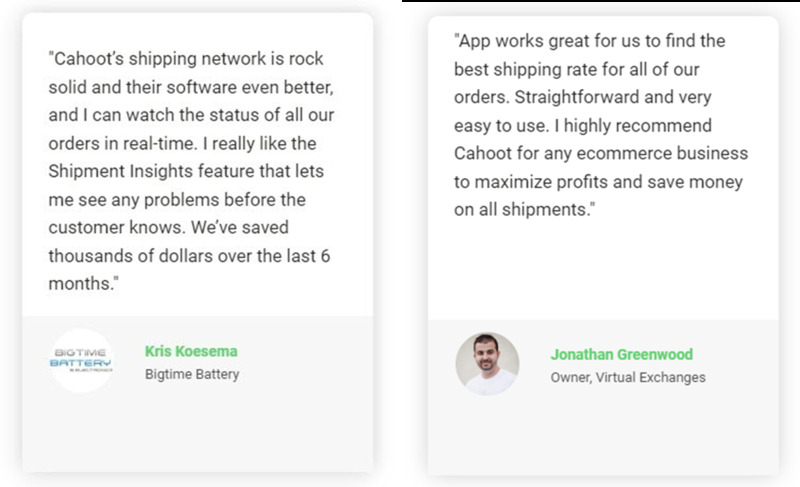
Summary
In conclusion, ecommerce shipping software is at the center of successful shipping operations, helping companies to reduce costs and improve customer satisfaction. The top solutions offer a range of features that cater to different business needs, from automation and ample integration options to real-time tracking and compliance management. By choosing the right shipping software, businesses can optimize their shipping strategy, streamline workflows, and stay ahead of the competition.
Frequently Asked Questions
What is ecommerce shipping software?
Ecommerce shipping software automates and manages the order fulfillment workflow, including tasks like label printing, inventory tracking, and carrier integration. This streamlines efficiency and enhances customer satisfaction.
How does shipping software help reduce costs?
Shipping software effectively reduces costs by optimizing carrier choices and granting access to discounted rates, while also automating processes to save time and minimize errors. This can lead to significant savings for businesses.
Why is real-time tracking important in shipping software?
Real-time tracking offers customers immediate updates on their shipments, improving visibility and alleviating concerns regarding delivery times. The resulting customer trust and satisfaction leads to stronger relationships and higher lifetime customer value.
What features should I look for in shipping software?
When choosing shipping software, prioritize features such as integration capabilities, multi-carrier support, real-time tracking, automated label printing, and a user-friendly interface for optimal efficiency. This will enhance your shipping experience and streamline operations.
How can shipping software improve customer satisfaction?
Shipping software enhances customer satisfaction by delivering timely updates on shipment statuses, streamlining returns management, and ensuring prompt deliveries. This transparency and efficiency significantly boost the overall customer experience.

Turn Returns Into New Revenue

Amazon Shipping Software: Boost Amazon Sales & Cut Costs with Smart Shipping Automation
In this article
 10 minutes
10 minutes
- What is Amazon Shipping Software?
- The Importance of Sales Channel Integrations: Selling Beyond Amazon
- The Benefits of Multi-Channel Shipping Software
- How to Choose the Right Amazon Shipping Software
- Amazon’s Performance Metrics for Standard and Seller Fulfilled Prime (SFP) Orders
- What is Amazon Buy Shipping API? Benefits & Limitations
- Why Cahoot is the Best Software for Shipping Amazon Orders (Including Seller Fulfilled Prime)
- The Future of Amazon Fulfillment is Here
- Frequently Asked Questions
What is Amazon Shipping Software?
Efficient ecommerce order fulfillment and shipping is the backbone of success for Amazon Sellers. Amazon shipping software is a specialized tool designed to streamline Amazon order fulfillment while meeting strict performance metrics. The software assists Amazon Sellers in optimizing their operations, improving visibility, and streamlining logistics for better sales performance. Whether fulfilling standard Seller-fulfilled orders (FBM) or shipping in the Seller Fulfilled Prime (SFP) program, having the right software ensures seamless integration, cost savings, and customer satisfaction.
Modern shipping software integrates with multiple sales channels, (including Amazon Seller accounts), optimizes carrier selection, automates label generation, and ensures compliance with Amazon’s strict delivery expectations. It eliminates manual work, reducing errors and improving fulfillment speed—critical in today’s fast-paced ecommerce environment.
The Importance of Sales Channel Integrations: Selling Beyond Amazon
While Amazon is a dominant force in ecommerce, many Sellers operate across multiple platforms, in addition to their Amazon account, to maximize sales opportunities. Effective shipping software must support:
- Amazon (Marketplace & Seller Fulfilled Prime)
- Walmart
- Shopify
- eBay
- Etsy
- Other marketplaces and ecommerce platforms
Seamless integration ensures all orders—regardless of the platform—are processed from a single dashboard. Without proper integration, businesses face inventory mismatches, fulfillment delays, and operational inefficiencies. The right software centralizes data, syncing inventory and tracking across platforms and marketplaces, reducing manual updates, preventing overselling, and improving customer experience.
Slash Your Fulfillment Costs by Up to 30%
Cut shipping expenses by 30% and boost profit with Cahoot's AI-optimized fulfillment services and modern tech —no overheads and no humans required!
I'm Interested in Saving Time and MoneyThe Benefits of Multi-Channel Shipping Software
1. Centralized Order Management
Processing orders from multiple platforms in one place saves time and prevents fulfillment errors. A unified dashboard allows Sellers to efficiently manage shipping for Amazon, Shopify, Walmart, and beyond.
2. Cost Optimization Through Rate Shopping
Smart shipping software automatically compares carrier rates in real-time, helping businesses save money by ensuring they always get the lowest-cost shipping label without compromising delivery speed.
3. Carrier Diversification and Flexibility
Relying on a single carrier can be risky. Multi-carrier support lets Sellers choose from multiple shipping providers based on price, service level, and delivery region, reducing costs and improving reliability.
4. Automated Shipping Label Creation
Generating shipping labels manually is time-consuming and error-prone. Automated label creation and printing speeds up fulfillment, ensuring orders ship faster, more accurately, and at lower labor costs.
5. Reliable Tracking Customer Experience
A robust shipping solution provides efficient order tracking and management for shipping orders, offering real-time tracking updates and notifications that reduce customer inquiries and increases satisfaction by offering complete visibility into shipments.
How to Choose the Right Amazon Shipping Software
Choosing the right Amazon shipping software can be a daunting task, especially with the numerous options available in the market. However, by considering a few key factors, you can make an informed decision that meets your ecommerce business needs. Here are some tips to help you choose the right Amazon shipping software:
- Determine Your Shipping Needs: Consider the type of products you sell, the frequency of your shipments, and the destinations you ship to. This will help you identify the features you need in a shipping software.
- Check Compatibility with Amazon Seller Central: Ensure that the shipping software integrates seamlessly with your Amazon Seller Central account. This will enable you to manage your orders, inventory, and shipping processes efficiently.
- Evaluate Shipping Rates and Services: Compare the shipping rates and services offered by different software providers. Look for software that offers discounted rates, flexible shipping options, and reliable shipping carriers.
- Assess Inventory Management Capabilities: If you have a large inventory, look for software that offers robust inventory management features. This will help you track your stock levels, automate purchase orders, and optimize your inventory management processes.
- Consider Scalability and Flexibility: Choose software that can grow with your ecommerce business. Look for software that offers flexible plans, scalable infrastructure, and customizable features.
- Read Reviews and Ask for Referrals: Research the software provider’s reputation by reading reviews and asking for referrals from other ecommerce Sellers. This will give you an idea of the software’s performance, customer support, and overall user experience.
By considering these factors, you can choose the right Amazon shipping software that meets your ecommerce business needs and helps you streamline your shipping workflow.
Looking for a New 3PL? Start with this Free RFP Template
Cut weeks off your selection process. Avoid pitfalls. Get the only 3PL RFP checklist built for ecommerce brands, absolutely free.
Get My Free 3PL RFPAmazon’s Performance Metrics for Standard and Seller Fulfilled Prime (SFP) Orders
Amazon holds Sellers to strict performance standards, especially for those participating in Seller Fulfilled Prime (SFP). To meet Amazon’s strict performance standards, Sellers must ensure their shipping processes are efficient and reliable. Here are the key requirements:
Standard Amazon Orders
To maintain good standing, Sellers must:
- Maintain an On-Time Delivery Rate of 90% or higher
- Late Shipment Rate must not exceed 4%
- Keep the Pre-fulfillment Cancellation Rate below 2.5%
- Provide Valid Tracking for 95%+ of orders
- Ensure Order Defect Rates (negative feedback, A-to-Z claims, chargebacks) remain under 1%
Seller Fulfilled Prime (SFP) Orders
For Sellers enrolled in Seller Fulfilled Prime, the requirements are even stricter:
- Maintain an On-Time Delivery Rate of 93.5% or higher
- Provide Valid Tracking for 99%+ of orders
- Keep the Pre-fulfillment Cancellation Rate ≤ 0.5%
- 1-day Page Views >30%, 2-day Page Views >70% for standard-size products
- 1-day Page Views >10%, 2-day Page Views >45% for oversize products
- 2-day Page Views >15% for extra large products (there is no 1-day requirement for this size tier)
- Same-day handling for Prime orders (orders must ship out the same day if received before the cut-off time)
- Weekend fulfillment capability to match Amazon’s weekend delivery expectation
- Strict delivery speed adherence—late deliveries can result in suspension from SFP
- Sellers must provide free returns for all eligible items weighing less than 50 lb, for any reason
Meeting these requirements requires exceptional shipping efficiency, which is where next-generation shipping software comes into play.
What is Amazon Buy Shipping API? Benefits & Limitations
Amazon provides the Buy Shipping API to Sellers, either when buying postage directly through Seller Central, or as a tool for Sellers looking to ensure compliance with its stringent shipping standards.
Benefits of Amazon Buy Shipping API:
- Guaranteed Valid Tracking: Ensures every order includes a valid tracking number.
- Seller Protection: Orders shipped through Buy Shipping are eligible for Amazon’s Seller protection against A-to-Z claims.
- Automatic Performance Tracking: Amazon monitors compliance and reduces the risk of penalties.
- Multi-Carrier Rate Shopping: Sellers can compare rates across Amazon’s partnered carriers and select the best shipping option.
- Late Delivery Exceptions: Orders that are delivered late can be exempted from performance metrics as long as they were shipped on time.
Limitations of Amazon Buy Shipping API:
- Limited Carrier Choices: Not all carriers are available through Amazon’s Buy Shipping service, which can prevent access to better rates elsewhere.
- Support for 1 Carrier Account Each: Sellers that have multiple carrier rate cards from the same carrier for different size, weight, and/or shipping zone products cannot rate shop across them; Seller Central only supports the use of 1 negotiated account per carrier.
- Potentially Higher Costs: Rates may not always be the lowest available, making third-party rate shopping essential.
While Buy Shipping API has some nice benefits, merchants looking to maximize cost savings and flexibility often pair it with an advanced shipping platform that optimizes fulfillment and reverse logistics beyond Amazon’s system.

Why Cahoot is the Best Software for Shipping Amazon Orders (Including Seller Fulfilled Prime)
Not all shipping software is created equal. Cahoot is purpose-built to meet Amazon’s demanding requirements, ensuring seamless SFP compliance and cost-optimized standard fulfillment.
1. Purpose-Built for Seller Fulfilled Prime (SFP)
Unlike generic shipping solutions, Cahoot was designed from the ground up to handle Seller Fulfilled Prime orders. With automated compliance to Amazon’s performance requirements, weekend fulfillment support, and same-day shipping automation, Cahoot ensures Sellers maintain their Prime eligibility without penalty risks.
2. Automated Rate Shopping for Maximum Savings
Cahoot intelligently compares real-time shipping rates for all the carriers and services you support and creates the cheapest labels that will deliver on time, ensuring all orders always ship at the lowest cost without compromising delivery speed.
3. Multi-Channel Fulfillment Beyond Amazon
Cahoot seamlessly integrates with Walmart, Shopify, eBay, TikTok Shop, and more, providing a centralized dashboard for fulfilling orders across all platforms.
4. Intelligent Order Routing for Faster Fulfillment
Cahoot’s advanced AI-driven order routing automatically assigns orders to the nearest warehouse with stock availability, minimizing transit time and reducing shipping costs.
5. Bulk Label Printing and 1-Click Shipping
With Cahoot, Shipping Labels are created autonomously, no human, so Sellers can print labels for thousands of orders in minutes, eliminating repetitive manual work and improving warehouse efficiency.
6. Effortless Weekend and Same-Day Fulfillment
By automating fulfillment workflows and ensuring weekend processing capabilities, Cahoot helps Sellers stay compliant with Amazon’s Prime-level shipping expectations.
Scale Faster with the World’s First Peer-to-Peer Fulfillment Network
Tap into a nationwide network of high-performance partner warehouses — expand capacity, cut shipping costs, and reach customers 1–2 days faster.
Explore Fulfillment NetworkThe Future of Amazon Fulfillment is Here
Shipping on Amazon has never been more complex, and Sellers who rely on outdated tools risk falling behind. Cahoot’s next-generation shipping software ensures merchants can meet Amazon’s performance metrics, reduce shipping costs, and streamline multi-channel fulfillment—all from a single platform.
For businesses looking to scale efficiently, grow into or maintain Seller Fulfilled Prime eligibility, and optimize fulfillment operations, Cahoot provides a game-changing advantage.
Are you ready to take your Amazon fulfillment to the next level? It’s time to ditch legacy shipping tools and embrace automation, intelligence, and efficiency with Cahoot.
Frequently Asked Questions
What is a shipping solution?
Shipping solutions are a combination of services, strategies, and tools aimed at managing and streamlining the process of sending products from one location to another.
What’s the difference between Cahoot’s network and Cahoot’s shipping software?
Cahoot’s platform is a peer-to-peer order fulfillment services network where top-rated merchants share warehouse space and fulfillment services with one another. Cahoot’s shipping software is next-generation ecommerce shipping software that can support any size merchant, including high-volume merchants shipping millions of parcels per year. Merchants can use either or both. Our fastest-growing clients use both.
What are the carriers for ecommerce shipping?
The most common national carriers are UPS, USPS, and FedEx, while popular regional carriers include OnTrac, Courier Express, and PITT OHIO, among others. Amazon Shipping will soon be matching the last mile delivery reach of the national carriers. For international shipments, DHL Express and GlobalPost are most common, however, UPS, USPS, FedEx and many other carriers also support international deliveries.
How to ship items you sell online?
To ship products from your house, you can use a shipping carrier like USPS, FedEx, or UPS. First, package your product securely and weigh it to determine the shipping cost. Then, create a shipping label online and schedule a pickup or drop off at a carrier location. You can also purchase shipping and dropoff packages at the same time at any post office, The UPS Store, and/or FedEx Office location.
How can I reduce shipping costs?
To reduce shipping costs, optimize packaging for weight and size, utilize flat-rate shipping options for heavy items, explore discounted shipping rates, offer local delivery or pickup, and consider prepaid shipping. Many platforms like Cahoot and ShipStation offer discounted shipping rates through their carrier relationships that can save many thousands of dollars.

Turn Returns Into New Revenue

Best Ecommerce Shipping Solutions for 2025: Streamline Your Delivery Process
In this article
 18 minutes
18 minutes
- Key Takeaways
- Understanding Ecommerce Shipping Solutions
- Key Features to Look for in Ecommerce Shipping Solutions
- Choosing the Right Shipping Solution for Your Business
- Top Ecommerce Shipping Solutions in 2025
- Enhancing Customer Experience with Shipping Solutions
- Reducing Shipping Costs with Advanced Solutions
- Streamlining Your Order Fulfillment Process
- Ensuring Security and Compliance
- Using Analytics to Optimize Shipping Operations
- Summary
- Frequently Asked Questions
Looking for the top ecommerce shipping solutions to improve your business? This guide highlights the best options for 2025 to streamline delivery, cut costs, and boost customer satisfaction. Pay special attention to those that are future proof.
Key Takeaways
- Ecommerce shipping solutions are critical for optimizing delivery processes and enhancing customer satisfaction, emphasizing the need for efficient strategies amidst industry competition.
- Key features for effective shipping solutions include integration capabilities, multi-carrier support, automation, and cost optimization, which are essential for improving operational efficiency.
- Future trends in ecommerce shipping focus on sustainability and technology, with advancements such as AI and machine learning optimizing logistics and enhancing eco-friendly practices.
Understanding Ecommerce Shipping Solutions
Ecommerce shipping solutions manage the entire fulfillment workflow: delivering products from the point of order completion to the customer’s doorstep, making them essential for business success. These solutions are not just about moving packages from point A to point B; they are about optimizing every step of the shipping process to ensure efficiency and customer satisfaction. Therefore, shipping solutions play a critical role in differentiating your business and keeping customers happy.
Online businesses face unique challenges in shipping, such as managing costs while meeting customer expectations for timely delivery. An effective shipping strategy must include key components like carrier selection, tracking methods, and cost management to navigate these challenges successfully. The shipping process directly impacts customer experience, with efficient packaging and timely delivery being crucial for customer satisfaction and retention.
Looking ahead, future trends in ecommerce shipping are focused on technological advancements and sustainable practices. These aim to improve efficiency and meet the evolving demands of customers, making it more important than ever to stay ahead of the curve.
Let AI Optimize Your Shipping and Boost Profits
Cahoot.ai software selects the best shipping option for every order—saving you time and money automatically. No Human Required.
See AI in ActionKey Features to Look for in Ecommerce Shipping Solutions
Identifying the right ecommerce shipping solution begins with understanding its integration capabilities with existing sales channels and business software.
Factors to consider when selecting shipping solutions include:
- Integration capabilities
- Scalability
- Automation
- Flexibility
- Cost optimization
These features are crucial for ensuring efficient operations and meeting customer expectations. Prioritizing these features helps businesses optimize shipping processes and enhance overall performance. Key features to consider in ecommerce shipping solutions include integration capabilities, multi-carrier support, and automated label creation and printing.
Integration Capabilities
Seamless integration with your existing tech stack is a game-changer. It’s almost table stakes today, but suffice to say that robust shipping software allows for seamless integration with your channels as well as all of the different order management and fulfillment processes, improving overall efficiency. Integrating shipping software with ecommerce platforms automates tasks like order import, updating stock levels, and reducing manual data entry and errors. This creates a workflow where orders from your ecommerce platform automatically sync with your shipping software, but without overselling, ensuring a seamless customer experience.
Cahoot, for instance, integrates with all popular marketplaces and ecommerce platforms and can connect with custom-built software via an API. This level of integration not only streamlines shipping workflows but also enhances inventory management, ensuring that your stock levels are always accurate across all sales channels.
Multi-Carrier Support
Having access to multiple shipping carriers is a significant advantage. It enables businesses to offer competitive rates and diverse delivery options to customers of all demographics. Shoppers today expect a variety of shipping options, including next-day delivery, flat-rate shipping, and international shipping.
Shipping software with multi-carrier support facilitates rate comparisons, optimizing delivery times and costs. UPS, USPS, DHL Express, and Canada Post, for example, offer pre-negotiated rates that can provide cost savings to customers during checkout. This flexibility ensures that you can meet customer expectations without breaking the bank, especially when using the best shipping software, and efficient and reliable shipping services that deliver on time.
Automated Label Creation and Printing
Automated label creation and printing solutions significantly expedite the preparation of packages, enhancing operational efficiency while ensuring the optimal label is used for the specific shipping circumstance. Autonomous label creation reduces manual work, minimizes errors, accelerates fulfillment, and creates the cheapest shipping label using real-time carrier rate shopping, which is particularly beneficial as shipping volume increases.
Shipping platforms should feature batch shipping label creation and printing capabilities to prepare all necessary labels for the day’s shipments autonomously with just a few clicks to dramatically speed up order fulfillment and reduce the risk of errors.
Choosing the Right Shipping Solution for Your Business
Selecting the right shipping solution is crucial for ecommerce businesses to improve efficiency and meet their specific logistics needs. An ecommerce fulfillment warehouse plays a key role in managing order processing and shipping, making it essential to choose a solution that complements your fulfillment strategy.
Deciding on shipping rates and methods is a critical first step before shipping ecommerce orders. Next-generation shipping software must simplify operational complexities, drive efficiencies, and generate meaningful cost savings. Legacy shipping software can create more problems for Sellers as it is not equipped to handle the complexities of distributed fulfillment.
Understanding your shipping volume, managing costs, and ensuring international compliance are key factors in this decision-making process. Let’s explore these in more detail.
Assessing Your Shipping Volume
Understanding your shipping volume is essential for choosing a solution that can grow with your operational needs. It needs to accommodate seasonal spikes and consistent growth.
Recognizing and preparing for shipping volume fluctuations can help ensure that the selected solution meets both current and future business demands. This preparation is vital for maintaining efficiency and customer satisfaction during peak times.
Cost Management and Discounted Rates
Cost management is a cornerstone of any effective shipping strategy. Negotiating shipping contracts for bulk shipments often leads to favorable rates and significant savings. Analyzing shipping costs as a percentage of sales can highlight the impact of shipping on overall profitability.
Data analysis can uncover specific shipping routes and methods that lead to higher costs, allowing businesses to adjust their strategies for savings. Using shipping software can enhance carrier rate negotiations and streamline shipping processes, making cost management more efficient.
International Shipping Compliance
Compliance with international regulations is crucial to avoid delays in package delivery. Customers are responsible for additional customs fees at delivery, which can cause friction if not handled properly.
Accurate completion of customs forms is necessary to prevent packages from being held up. These forms can be obtained online or at local post office/shipping retail locations. Ensuring compliance can help businesses avoid potential fines and restrictions on future shipments.
Top Ecommerce Shipping Solutions in 2025

Several top-tier ecommerce shipping solutions have emerged as leaders in 2025, each offering unique features and benefits. These include Cahoot, ShipStation, and Easyship. Each of these solutions provides distinct advantages that can help streamline your shipping workflow and wow your customers.
Exploring these options helps you find the best fit for your business needs and budget:
Cahoot
Cahoot is a next-generation, humanless ecommerce shipping software designed for high-volume merchants, but is so easy to use that businesses of any size can take advantage of the future proof technology. Because 97%+ of shipping labels are rate shopped and pre-created before you show up to the warehouse with coffee in-hand, it allows users to bulk-print labels with just one click, enabling immediate shipping. This feature streamlines order fulfillment by eliminating the need for manual rate comparisons and speeding up the shipping process by as much as 21X or more.
Cahoot integrates with all popular marketplaces, ecommerce platforms, and carriers, and can connect with custom-built software via an API. It notifies Sellers whenever a problem occurs with carriers delivering packages, allowing for proactive resolution and a better customer experience than competitive solutions.
ShipStation
ShipStation supports multi-carrier shipping, allowing businesses to compare rates and choose the best option for each shipment. It incorporates automation rules to efficiently manage shipping tasks, significantly reducing manual intervention and errors. And it has more integrations available than just about any other solution, including very niche and long-tail platforms.
Through branded tracking pages, ShipStation enhances the customer experience by allowing businesses to maintain their branding throughout the delivery process. This feature ensures that customers have a consistent brand experience from purchase to delivery.
Easyship
Easyship is a cloud-based shipping solution that offers discounted shipping rates, customer tracking, seamless integration, and dynamic rates at checkout. These discounted shipping rates can significantly reduce costs for businesses.
The dynamic rates at checkout improve conversion rates by providing customers with real-time shipping costs. Additionally, Easyship’s comprehensive tracking features allow customers to monitor their shipments effectively, enhancing the overall customer experience.
ShipStation vs. Cahoot: 21x Faster, Real Results
Get the inside scoop on how a leading merchant switched from ShipStation to Cahoot—and what happened next. See it to believe it!
See the 21x DifferenceEnhancing Customer Experience with Shipping Solutions
Delivering an exceptional customer experience is of utmost importance (no pun intended). Efficient shipping not only improves the bottom line, but it supports ongoing customer relationships, potentially increasing sales and loyalty. Shipping costs play a crucial role in ecommerce profitability, making cost reduction vital for retaining customers. An effective shipping strategy can reduce customer inquiries about order statuses, allowing support teams to focus on other issues.
Incorporating features like real-time tracking and notifications, flexible delivery options, and branded packaging and tracking pages can elevate your shipping strategy to new heights.
Real-Time Tracking and Notifications
Real-time tracking is essential for keeping customers informed about their orders. Shipping solutions should provide visibility into shipment tracking, consolidating all orders in one interface for wider visibility and easier management. Automated notifications throughout the fulfillment and shipping timeline can reduce customer anxiety, improve satisfaction, and limit the customer service burden.
Shipment notifications can be delivered via various channels, including email, SMS, and mobile app alerts, keeping customers engaged and informed. This level of transparency and meeting the customer where they are can significantly boost their confidence in your business.
Flexible Delivery Options
Offering flexible delivery options is crucial for today’s online shopper. According to many studies, customers prefer flexible delivery options. Providing diverse shipping methods allows customers to select options that best meet their needs, budgets, and availability.
Having multiple delivery options can enhance customer satisfaction and minimize the likelihood of cart abandonment. This flexibility ensures that your customers can choose the delivery method that works best for them, making their shopping experience more convenient and enjoyable.
Branded Packaging and Tracking Pages
Branded packaging and custom tracking pages play a crucial role in shaping customer perceptions and experiences during the shipping process. Customized tracking pages can enhance the customer experience by providing a branded touchpoint during the shipping process.
Integrating branded packaging and custom tracking pages not only elevates the customer experience but also fosters brand loyalty and reduces the likelihood of cart abandonment. This cohesive branding can make a lasting impression on your customers, encouraging repeat business and positive reviews.
Reducing Shipping Costs with Advanced Solutions
Shipping costs are a significant expense for ecommerce businesses, and reducing these costs can improve profitability. Key metrics to monitor include on-time delivery rates, shipping costs per shipment, and carrier performance on speed and reliability. Tracking shipping expenses over time allows businesses to identify cost trends and potential financial issues.
Advanced solutions like rate comparison tools, volume discounts, and efficient packaging strategies can help reduce shipping costs and streamline operations.
Rate Comparison Tools
Shipping rates are influenced by various factors, including courier options and unique business variables. Using rate comparison tools in ecommerce shipping allows businesses to identify the best shipping rate deals available in the market.
Cahoot, for example, automatically finds and assigns the lowest cost labels for each order, ensuring users save money on every package shipped without compromising delivery speed. Utilizing lightweight packaging like poly mailers can further reduce shipping costs as they adjust to different volumes and weights.
Volume Discounts
Consolidating shipping volumes helps businesses negotiate better rates with carriers. Volume discounts can significantly lower shipping expenses for ecommerce businesses. Securing volume discounts allows businesses to optimize their shipping costs and improve profit margins.
Overall, leveraging volume discounts through an effective ecommerce shipping strategy can enhance the efficiency and cost-effectiveness of ecommerce operations.
Efficient Packaging Strategies
Optimizing packaging can lead to lower shipping rates and reduced operational costs. Understanding the average package weight can help in optimizing packaging to minimize shipping costs.
Businesses should consider carrying a variety of package sizes and materials to meet diverse shipping needs efficiently. This approach not only reduces packaging costs but also ensures that products are protected during transit, reducing the risk of damage and returns.
Streamlining Your Order Fulfillment Process
Streamlining your order fulfillment process is necessary for improving efficiency and customer satisfaction. Fulfillment services can enhance the efficiency of order processing by managing logistics and inventory storage. Using platforms like ShipStation simplifies the management of orders and fulfillment workflow by automating order imports and logistics.
Partnering with third-party logistics providers can significantly improve customer experience by streamlining logistics operations. Regularly monitoring shipping metrics such as delivery times and order accuracy will help you stay on top of your shipping performance and bring clarity when deciding if outsourcing fulfillment should be considered.
Leveraging route optimization tools can significantly reduce delivery times by identifying the fastest paths for shipment.
Batch Processing and Automation
Implementing batch processing can significantly enhance the speed of order packing and shipping. Automated systems can cut down the time required for packing and shipping orders. Data analytics can pinpoint inefficiencies in shipping routes and processes, enabling targeted cost-reduction strategies.
This level of automation and data-driven decision-making can make a substantial difference in your order fulfillment efficiency.
Inventory Management Integration
Integrating shipping solutions with inventory management software ensures that stock levels remain accurate across all sales platforms, and minimizes double data entry (or triple, or more!). Or better yet, select a solution that has inventory management capabilities built-in.
Effective integration with ecommerce platforms can streamline the order fulfillment process, ensuring that your inventory is always up to date and that orders are processed efficiently.
Scheduling Carrier Pickups
Scheduling carrier pickups helps businesses manage their shipping tasks more effectively. Scheduling pickups helps businesses streamline the shipping workflow, provide predictability, and reduce time spent dropping off packages at carrier hubs. Arranging carrier pickups can eliminate the need to stand in lines, saving time and resulting in smoother operations. Some ecommerce shipping solutions such as ShipStation will allow you to schedule pickups from within their software.
Ensuring Security and Compliance
Ensuring security and compliance is essential for maintaining customer trust and avoiding legal issues. Ecommerce businesses must implement robust security measures to protect customer data. Ecommerce brands face increased risks just having access to this sensitive information due to multiple parties needing access to order data, making shipping insurance essential.
International regulations, paperwork, customs forms, and duties calculations are required for shipping to ensure compliance. Regulations are increasingly mandating reduced packaging waste, pushing ecommerce brands to adopt sustainable packaging solutions.
Shipping Insurance
Shipping insurance is vital for protecting shipments, helping ecommerce businesses manage risks associated with theft, loss, and damage during transit. For imported inventory, marine cargo insurance provides comprehensive coverage for the full value of goods throughout their shipping journey from overseas. Consumer delivery insurance allows customers to insure their shipments during checkout, addressing concerns about theft or damage. Limited liability insurance relies on carriers’ own policies, which typically cover only minimal amounts, resulting in a riskier option for ecommerce companies. While this latter option is free up to $50 or $100 declared value, depending on the carrier used, getting claims approved is often impossible, so it’s best to protect the goods when it makes sense to do so. Using inexpensive third-party cargo insurance is recommended.
Data Security Measures
Shipping solutions must implement robust data security measures to protect sensitive customer information from unauthorized access. Encryption protocols are essential for protecting customer data during transactions and communications. Encrypting sensitive information, using firewalls, and maintaining antivirus protection are essential for data security in ecommerce.
Authentication methods such as two-factor verification and IP monitoring help ensure secure online transactions. And sensitive data should be redacted from ecommerce shipping solutions after transactions are settled and no longer needed.
Cut Costs with the Smartest Shipping On the Market
Guranteed Savings on EVERY shipment with Cahoot's AI-powered rate shopping and humanless label generation. Even for your complex orders.
Cut Costs TodayUsing Analytics to Optimize Shipping Operations
Using analytics in shipping operations can significantly enhance overall efficiency by identifying areas for improvement. Regular updates and audits of ecommerce software are critical in preventing vulnerabilities from being exploited. Emerging technology in shipping includes AI and predictive analytics, which enhance demand forecasting and operational efficiency.
AI applications in shipping help companies predict demand by analyzing historical data and live market trends. Agentic AI solutions can act on their findings independently and create Purchase Orders with vendors within established budget guidelines. By leveraging advanced analytics, businesses can make data-driven decisions that improve their shipping and procurement operations.
Tracking Performance Metrics
Tracking key performance metrics is essential for evaluating shipping efficiency and delighting customers. Use tools to monitor on-time delivery rates as higher percentages correlate with customer happiness.
Average delivery time is also an important metric, helping businesses gauge their shipping efficiency against industry standards and delivery promises. Shipping software analyzes shipping data to provide insights into business performance and optimize logistical efficiency.
Identifying Cost-Saving Opportunities
Analytics can reveal cost drivers linked to various carriers and services, shipping supplies, and waste from inefficient shipping such as using boxes that are too large and push the shipment into more expensive dimensional weight rates. Reviewing the data enables businesses to negotiate better rates on the shipping weights, sizes, and zones they are actually using while minimizing unnecessary expenses.
Improving Delivery Times
Utilizing data insights can significantly enhance the optimization of delivery routes for ecommerce businesses. Advanced analytics enable companies to analyze traffic patterns, weather conditions, and delivery performance to select the most efficient routes and shipping locations to reduce transit times, fuel consumption, and operational costs. The effective application of data insights in delivery planning leads to faster delivery times, higher customer satisfaction, and improved overall efficiency.
Summary
Choosing the right ecommerce shipping solution involves understanding your business needs and the key features that can optimize your workflows and deliver meaningful business impact. From integration capabilities and multi-carrier support to automated label creation and printing, these features play a crucial role in enhancing operational efficiency and customer satisfaction. As ecommerce continues to evolve, adopting advanced shipping strategies and the solutions that support them will be key to maintaining a competitive edge and ensuring long-term success.
Frequently Asked Questions
What are the key features to look for in ecommerce shipping solutions?
When selecting ecommerce shipping solutions, prioritize integration capabilities, multi-carrier support, automated label creation and printing, cost management, and compliance with domestic and international regulations.
How can I reduce shipping costs for my ecommerce business?
To effectively reduce shipping costs for your ecommerce business, optimize packaging for weight and size, utilize flat-rate shipping options for heavy items, explore discounted shipping rates, and offer local delivery or pickup. Many platforms like Cahoot, ShipStation, and Easyship offer discounted shipping rates through their carrier relationships that can save many thousands of dollars. Also, utilize rate comparison tools, secure volume discounts, and optimize your packaging strategies (shipping supplies and cartonization technology). These approaches will help you streamline expenses and enhance profitability.
Why is real-time tracking important for ecommerce shipping?
Real-time tracking is crucial for ecommerce shipping as it enhances customer satisfaction by keeping them informed about their order status, thereby reducing anxiety associated with uncertainty. This transparency fosters trust and loyalty towards the brand.
What is the best online shipping service?
The Top 3 Online Shipping Services are:
- Cahoot
- ShipStation
- EasyShip
What’s the difference between Cahoot’s network and Cahoot’s shipping software?
Cahoot’s platform is a peer-to-peer order fulfillment services network where top-rated merchants share warehouse space and fulfillment services with one another. Cahoot’s shipping software is next-generation ecommerce shipping software that can support any size merchant, including high-volume merchants shipping millions of parcels per year. Merchants can use either or both. Our fastest-growing clients use both.
What are the carriers for ecommerce shipping?
The most common national carriers are UPS, USPS, and FedEx, while popular regional carriers include OnTrac, Courier Express, and PITT OHIO, among others. Amazon Shipping will soon be matching the last-mile delivery reach of the national carriers. For international shipments, DHL Express and GlobalPost are most common, however, UPS, USPS, FedEx, and many other carriers also support international deliveries.
How to ship items you sell online?
To ship products from your house, you can use a shipping carrier like USPS, FedEx, or UPS. First, package your product securely and weigh it to determine the shipping cost. Then, create a shipping label online and either schedule a carrier pickup or drop them off at a carrier location. You can also purchase postage and drop your packages off at the same time at any post office, The UPS Store, and/or FedEx Office location.

Turn Returns Into New Revenue

Save Money With Ecommerce Shipping Software: Next-Gen Solutions
In this article
 7 minutes
7 minutes
- Shipping Costs are One of the Biggest Challenges for Ecommerce Businesses Today
- Calculating Shipping Costs
- Savings: Stay Ahead and Boost Margins Despite Rising Costs
- Pick the Cheapest Label Automatically, Every Time
- Pay the Right Shipping Fees, Even on Complex Orders
- Ease of Use
- Summary: Why Next‑Gen Shipping Software is Essential for Cost Savings
- Frequently Asked Questions
Shipping costs are one of the biggest challenges for ecommerce businesses today, and understanding them is essential to reducing expenses and increasing profit margins. With rising carrier fees, labor expenses, and warehouse leases, every dollar saved makes a difference. Shipping costs can vary greatly depending on several factors, including package weight, dimensions, destination, and shipping method. Traditional shipping software, built for a simpler time, often fails to optimize costs effectively, leaving businesses to absorb unnecessary expenses. By gaining a clear understanding of these costs, businesses can make informed decisions that help reduce shipping expenses and improve overall efficiency.
That’s where next-generation ecommerce shipping software comes in. Designed to reduce shipping costs at every stage, these advanced solutions automate key processes: choosing the most affordable shipping labels, optimizing package sizes to avoid dimensional weight fees, and streamlining fulfillment with minimal manual intervention. By leveraging automation and AI-driven decision-making, merchants can significantly cut costs while improving delivery efficiency.
In this article, we’ll explore how next-gen shipping software helps save money, eliminate cost leakages, and improve warehouse efficiency, giving businesses the competitive edge they need to succeed in ecommerce today.
Let AI Optimize Your Shipping and Boost Profits
Cahoot.ai software selects the best shipping option for every order—saving you time and money automatically. No Human Required.
See AI in ActionShipping Costs are One of the Biggest Challenges for Ecommerce Businesses Today
Shipping costs can be a significant challenge for ecommerce businesses, as they can eat into profit margins and affect customer satisfaction (and revenue) if they skimp on delivery speed. To reduce shipping costs, ecommerce businesses can implement various strategies, such as negotiating with shipping carriers, using discounted shipping supplies, and optimizing packaging. By taking proactive steps to manage shipping expenses, businesses can protect their profit margins and offer competitive shipping rates to their customers.
Calculating Shipping Costs
Calculating shipping costs involves considering all the factors mentioned above. To calculate shipping costs, ecommerce businesses can use shipping calculators, consult with shipping carriers, or connect to carrier APIs for real-time rate shopping to determine the most cost-effective option. It’s essential to factor in all shipping fees, including fuel surcharges, handling fees, delivery area surcharges, and insurance costs, among others. By accurately calculating shipping costs, businesses can set appropriate pricing strategies and avoid unexpected expenses.
Savings: Stay Ahead and Boost Margins Despite Rising Costs
We’ve now identified two key things that next-generation ecommerce shipping software must do – it must simplify operations in today’s complex world, while also boosting your team’s productivity and freeing up their time.
However, the biggest pressure merchants face today is around costs. At a time when major carriers implement annual rate increases (GRIs) and additional surcharges, along with rising worker wages and warehouse leases, Sellers need to be scrappy to save every penny to protect and increase their margins. It can make the difference between going out of business and finding success.
Legacy software does a poor job of unlocking savings because it was built for a world where resource optimization or cost‑cutting was not needed. We believe there are three key areas of the shipping workflow where software must be able to unlock cost savings:
- Does the software pick the cheapest shipping label every time?
- Does the software optimize packaging and shipping costs for large, complex orders?
- Is the software easy to use, with minimal human oversight? Can it work effectively with untrained, seasonal, or part‑time labor?
ShipStation vs. Cahoot: 21x Faster, Real Results
Get the inside scoop on how a leading merchant switched from ShipStation to Cahoot—and what happened next. See it to believe it!
See the 21x DifferencePick the Cheapest Label Automatically, Every Time
Legacy Software – You’ll Never Know if You’re Saving Money
As we’ve seen previously, legacy software requires many manual automation rules to support workflows. But why do merchants go to all this trouble? The answer is simple – to identify the cheapest shipping label on every order.
However, the automations (mapping SKUs and customer addresses to fulfillment locations and carrier services) are simply a means to an end. There is no way to verify whether the rules ensure the cheapest option is picked every time.
To determine that, manual and deep cost comparison analysis is required. The possibility of cost leakage is real, and in a world where customers expect free and fast shipping on every order, every last dollar matters. You need certainty and confidence in the labels your shipping software selects.
Next‑Gen Software – Savings on Every Label
Cahoot’s software removes the maze of complex, human‑defined automation rules. With no rules to manage, you don’t need to worry about optimizing them for maximum savings. The system intelligently factors in all parameters to make the right choice every time.
It’s easy to overlook scenarios when defining rules manually. For example, a one-unit order might weigh less than one pound, qualifying for USPS Ground Advantage. But what if someone orders three units or six units? Cahoot’s system considers all data to make the optimal decision.
You no longer need to perform deep investigations to confirm savings. You can rest assured you’re getting the best label every time.
Pay the Right Shipping Fees, Even on Complex Orders
Legacy Software – Cost Leakages From Human Error
Legacy software leaves packaging decisions to humans, which can lead to cost leakages. Carriers charge based on dimensional weight, and oversized boxes increase costs beyond actual shipping rates.
Without automation or guidance, package selection relies on human judgment, raising the risk of errors.
Next‑Gen Software – Pay the Optimal Rate Every Time
Cahoot’s Intelligent Cartonization ensures optimal box selection for even the most complex orders. You pay only the minimum required shipping rate, and errors are dramatically reduced.
Ease of Use
Legacy Software – Needs Staff to Babysit the Tool
Legacy software is clunky and requires constant manual entry, workflow updates, and oversight. Changes from carriers or product catalogs break automations, demanding dedicated resources to maintain the tool.
Many Sellers hire teams just to configure and maintain their legacy shipping software, increasing staffing costs and diverting talent from more valuable work.
Next‑Gen Software – Anyone Can Use It
Cahoot automates most workflows, adapts to changes automatically, and requires minimal setup. Untrained, part‑time, or seasonal staff can quickly learn and use the system, reducing staffing costs and freeing teams to focus on higher‑value tasks.
Cut Costs with the Smartest Shipping On the Market
Guranteed Savings on EVERY shipment with Cahoot's AI-powered rate shopping and humanless label generation. Even for your complex orders.
Cut Costs TodaySummary: Why Next‑Gen Shipping Software is Essential for Cost Savings
As ecommerce businesses grow, shipping expenses rise. Legacy software leads to cost leakages, inefficient packaging, and manual labor inefficiencies, harming profit margins.
Next‑gen shipping software reduces costs by:
✅ Automatically selecting the cheapest label for every order
✅ Optimizing packaging to avoid dimensional weight fees
✅ Eliminating manual labor with intelligent automation
✅ Enabling untrained or seasonal staff to handle fulfillment easily
By embracing smarter shipping software, merchants can stop overpaying, streamline operations, and reinvest savings into growth.
This was Part 4 of our four‑part Next‑Generation Shipping Software Guide. To learn more, check out the other parts covering the old vs. new world, simplified fulfillment, and warehouse efficiency.
Frequently Asked Questions
What is the best shipping software?
It depends on your needs. Legacy solutions like ShipStation handle basic label printing but have limitations. Next‑gen software offers automation and optimized shipping with built‑in discounted rates.
How is Cahoot able to offer discounted shipping rates for small businesses?
Cahoot aggregates shipping volume across all users and partners with carriers and consolidators to negotiate best‑in‑class discounts, which we pass on to our users.
What shipping carriers does Cahoot work with?
Cahoot works with UPS, FedEx, USPS, DHL, Amazon Shipping, OSM Worldwide, OnTrac, Pitney Bowes, and regional carriers, ensuring you have access to the best shipping options.
How do I integrate Cahoot with my ecommerce platform?
Cahoot integrates with Shopify, WooCommerce, BigCommerce, Amazon, TikTok Shop, Rithum, and more. Native integrations let you start shipping with discounted rates quickly.
How quickly can I save on my shipping costs?
Once you sign up, you get instant access to pre‑negotiated shipping rates, letting you cut expenses from day one.
Do you provide customer support in case I need help?
Yes, Cahoot offers full customer support and an extensive self‑service help center to help with any questions or issues. Our support team is here to assist you with everything from integrating your ecommerce platforms to choosing the best shipping options and navigating packaging costs.
Can ecommerce shipping software handle returns?
Yes, Cahoot ecommerce shipping software can efficiently handle reverse logistics, automated return label generation, return order tracking, and inventory management. For peer‑to‑peer returns—where unused items move directly from one customer to the next—see our Peer‑to‑peer ecommerce returns solution, which cuts return costs by 64%, increases turnaround by 4×, and reduces CO₂ emissions by 54% on average.

Turn Returns Into New Revenue

Shipping Software for Ecommerce Fulfillment: The Next Generation of Shipping Simplified
In this article
 19 minutes
19 minutes
- What is Ecommerce Shipping Software?
- Benefits and Key Features
- Automatic Order Routing and Label Generation
- Multi-Warehouse Exception Handling with Multi-Carrier Shipping Software
- Multichannel Capabilities
- Integration With Fulfillment Networks
- Information Security and Data Protection
- The Future of Fulfillment is Here
- Frequently Asked Questions
Ecommerce has transformed the way people shop, but behind every seamless online purchase is a complex fulfillment operation. As consumer expectations for fast and affordable shipping continue to rise, merchants face increasing pressure to optimize their logistics. Managing inventory across multiple warehouses, coordinating with various carriers, and ensuring accurate, on‑time deliveries, all while keeping costs low, has become a daunting challenge.
Legacy shipping software was built for a simpler time when most businesses operated from a single warehouse and fulfilled orders through a few standardized shipping methods. But today’s ecommerce landscape is far more dynamic. Merchants must navigate multi‑channel sales, distributed fulfillment networks, and ever‑changing carrier rates, all while maintaining a smooth customer experience. Unfortunately, traditional shipping software often falls short, forcing businesses to rely on manual workarounds that are inefficient, error‑prone, and costly.
Next‑generation shipping software changes everything. By leveraging intelligent automation, real‑time decision‑making, and deep integration with fulfillment networks, modern shipping solutions eliminate the complexity of ecommerce logistics. These systems optimize order routing, reduce shipping costs, and ensure seamless fulfillment—without the need for endless configuration or constant oversight.
In this article, we’ll explore the major ways next‑generation shipping software simplifies ecommerce fulfillment, highlighting how it outperforms legacy systems in efficiency, accuracy, and scalability. Whether you’re a growing merchant or an established seller looking to streamline your operations, the future of shipping is here—and it’s built for success.
Let AI Optimize Your Shipping and Boost Profits
Cahoot.ai software selects the best shipping option for every order—saving you time and money automatically. No Human Required.
See AI in ActionWhat is Ecommerce Shipping Software?
Ecommerce shipping software is a specialized technology solution designed to streamline and optimize the shipping process for online businesses. Its primary purpose is to help ecommerce businesses manage their shipping operations efficiently, reduce shipping costs, and improve customer satisfaction. By integrating with ecommerce platforms, inventory management systems, and shipping carriers, ecommerce shipping software provides a seamless and automated shipping experience. This integration ensures that orders are processed quickly and accurately, inventory levels are synchronized, and customers receive their purchases on time, enhancing overall customer satisfaction.
Benefits and Key Features
The benefits of using ecommerce shipping software are manyfold. Firstly, it significantly reduces shipping costs by enabling businesses to compare real-time rates from multiple carriers and choose the most cost-effective option. This not only saves money but also ensures that customers receive their orders promptly. Improved customer satisfaction is another major benefit, as the software automates many aspects of the shipping process, reducing errors and delays.
Key features of ecommerce shipping software include real-time rate comparison, which allows businesses to find the best shipping rates instantly. Automated label printing streamlines the shipping process, saving time and reducing the risk of errors. Inventory management features help keep track of stock levels across multiple warehouses, ensuring that products are always available when needed. Order tracking provides customers with real-time updates on their shipments, enhancing their shopping experience.
Additionally, ecommerce shipping software supports international shipping, making it easier for businesses to expand their reach globally. The software often provides exclusive shipping discounts, further reducing shipping expenses. Multi-carrier support and integration with multiple sales channels ensure that businesses can manage all their shipping needs from a single platform, improving efficiency and supply chain visibility.
Simplifying Operations: Making Today’s Complex Ecommerce Effortless
Based on original research we’ve conducted, a merchant seeking to cover the continental U.S. (the lower 48 states) with affordable 2‑day ground shipping requires inventory to be positioned in 4 strategically located warehouses. If they’re seeking to achieve 1‑day delivery, that number rises to 9 fulfillment centers.
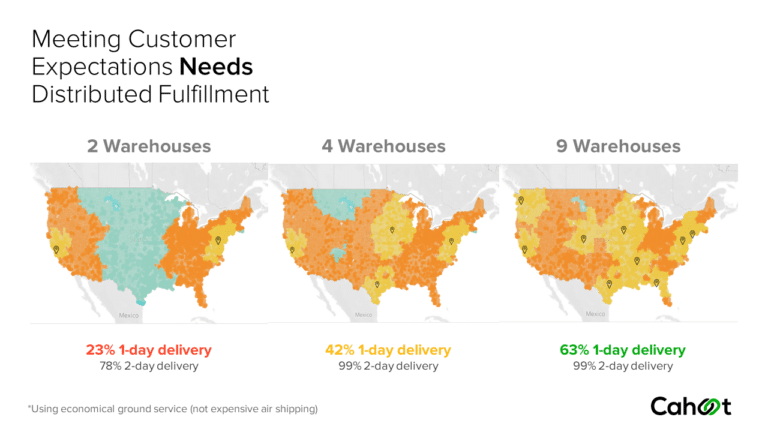
As the number of sales channels and warehouses increases, the operational complexity increases exponentially. Legacy shipping software was built for the old world, where fulfilling orders from just a single warehouse location was the norm. It was never built to handle the complexities of distributed fulfillment. Too many things at the core of the software would have to change to elegantly handle distributed fulfillment. This means merchants often try to get by with complex, convoluted workarounds that keep breaking. However, effective inventory management and synchronization can be achieved through the use of advanced fulfillment software, which streamlines operations, enhances accuracy, and addresses common challenges in the fulfillment lifecycle.
Today’s multi‑warehouse, multi‑channel environment creates many problem areas for Sellers to manage:
- When inventory is spread across such a large number of warehouses, which location should each order be routed to (you can’t draw a line down the middle of a map and expect to get the best shipping rate)?
- Distributed fulfillment offers possibilities if there are problems at any one warehouse location—such as receiving orders after the cut‑off time, running out of inventory, or inclement weather. How can software make identifying such exceptions and rerouting them easier?
- How can fulfillment be handled across multiple sales channels while ensuring a consistent, cohesive experience for customers?
- Can the system natively integrate with best‑in‑class fulfillment networks to unify your logistics technology and operations?
- With ecommerce growing all the time, online shoppers are sharing more sensitive data than ever. With an increased consumer demand for privacy protection, how does your shipping software keep personal information secure?
We’ll now take a look at each of these, examining the differences in the way legacy and next‑generation ecommerce shipping software handle them.
Automatic Order Routing and Label Generation
Legacy Software – Crude and Primitive Routing
Many of today’s popular legacy software have automated order routing features. However, do not be fooled—these capabilities are limited and prone to error, especially when handling diverse shipping options.
In systems like ShipStation, a “Ship From” location can be set based on specified criteria—such as the SKU ordered or the customer’s address. However, a large number of clunky automation rules have to be written—for example, writing a rule to have all orders from West Coast customers be shipped from your California warehouse. Similar rules mapping other states to respective fulfillment locations have to be manually written. Similarly, if you have certain SKUs available only in specific locations, you need to write rules to assign orders accordingly.
Creating such a large number of automation rules is an error‑prone, painful process for many reasons. Here are a few of them:
- So much to configure. Merchants need to ensure they’ve captured every business process through a rule. If they forget to set up any rule (quite possible, given the high levels of operational complexity today), it can create problems and cost leakages. Even the simplest of workflows require rules to be defined. For example, imagine that you wish to use only certain carrier services to make deliveries to residential addresses. Even in that case, you need to define automation rules mapping the address type to appropriate services.
- You’re guessing and hoping. Because your rules are manually defined by mapping SKUs or customer addresses to fulfillment locations, there could always be cases where the rules don’t make the most optimal decision. Without doing a deep, time‑consuming manual investigation, you’ll never be able to actually tell.
- Requires constant maintenance. Rules become obsolete when carriers change or update their services. For example, when USPS introduced Ground Advantage, your rules didn’t automatically update to factor in the new service. This means you had to spend hours updating and rewriting them.
Slow process. Sellers don’t feel comfortable beginning shipping with the software until they’re confident they’ve captured all of their processes through automation rules. This delays go‑live, ultimately increasing your time to value.
Next‑Gen Software – Intelligent, Powerful Routing Technology
Cahoot’s next‑generation shipping software comes with end‑to‑end intelligent automation. When you receive an order, the system intelligently compares multiple warehouse locations, inventory levels, carriers, and shipping services to pick the cheapest label that will meet the delivery SLA committed to the customer. In this way, the Cahoot shipping management software takes the thinking and error out of the rate shopping process, always providing the optimal shipping label, and improves shipping speed because it takes actual estimated real‑time delivery date into account based on ship date and day of the week.
With our technology, you won’t face the automation problems that we’ve highlighted with legacy software. Our intelligent order routing capabilities provide Sellers with many benefits:
- Nothing to configure – it just works. You don’t need to spend time worrying whether you’ve captured all your business workflows through automation rules. You don’t have to update rules and make sure they’re all compatible when business needs change. Cahoot factors in all variables like shipping services, warehouse locations, and inventory levels to pick the optimum fulfillment location on every order automatically.
- Based on the lowest cost, no more guessing. There’s no need to worry about whether your automations have been configured correctly to truly pick the best location every time. You can rest assured knowing that the decision is in the hands of technology, which makes the right choice for every order.
- No maintenance. The system automatically factors in any changes that carriers make to their services. There are no hand‑written automation rules to update or overwrite. When new services like Ground Advantage are launched, the system factors in this additional information and continues to automatically route orders correctly.
- Ready‑to‑go. Sellers can begin shipping in days or weeks with our software, not months. There’s no need to spend time wondering whether you’ve captured workflows through elaborate automations. This means you’ll be able to go live faster and shorten your time to value.
ShipStation vs. Cahoot: 21x Faster, Real Results
Get the inside scoop on how a leading merchant switched from ShipStation to Cahoot—and what happened next. See it to believe it!
See the 21x DifferenceMulti‑Warehouse Exception Handling with Multi‑Carrier Shipping Software
Legacy Software – Limited Rerouting Capability
With legacy software, it’s difficult to plan for the unexpected. Let’s imagine you have 2 warehouses—one in Chicago, and the other in Southern California. Suppose a blizzard strikes the Chicago location.
When working with legacy systems, you don’t have an easy way to temporarily suspend locations. All you’re looking for is a way to temporarily put fulfillment from your Chicago location on hold, while you wait for the weather to improve.
In legacy systems like ShipStation, each SKU is mapped to a list of warehouses from where it can be shipped. You will need to update this mapping between SKUs and fulfillment locations to stop fulfillment from one of your warehouses. This is a painful workaround that you have to perform for a very short period of time—once the weather improves, you’ll have to repeat the process to restore the original configuration.
All this adds to what is already a stressful time, making it difficult for your business to quickly adjust to, and recover from unexpected events. Robust shipping software solutions can help manage these exceptions more effectively, ensuring smoother operations and better customer service.
Next Gen Software – Agile, Flexible Order Rerouting
With Cahoot’s next‑generation shipping software, adverse events don’t have to mean disaster for your business. If one of your fulfillment locations goes down, you can quickly toggle it off. The system will automate shipping from the remaining available locations, helping you keep your customer promises and continue selling.
There are other scenarios when you might require intelligent exception management which need not be emergencies. For example, if one of your warehouse locations needs to close for a holiday, the system can exclude that location and continue to simplify shipping for you across the other active locations.
There are no automations to undo or rewrite. You don’t have to spend a lot of time restoring your system to its original state once the affected location is back up and running again—it’s just a simple toggle to flip on and off. This ensures that your business can continue operating smoothly during such events, and quickly recover from them with minimal impact.
Multichannel Capabilities
Legacy Software – Many Integrations, but of What Value?
One advantage that legacy software has by virtue of having been around for a longer time is its long list of integrations. These tools, such as ShipStation, Shipwise (formerly DesktopShipper), and ShippingEasy all have a long list of integrations with shopping cart platforms, online marketplaces, and other tools that ecommerce Sellers use.
However, while this is definitely a positive, we think this is a case of winning the battle but losing the war. In the above sections, you’ve seen some of the limitations of these tools (keep reading to see more deficiencies), and how they can hamper your productivity and hurt your costs on every single order. You might save a little time with out‑of‑the‑box integrations to more platforms, but does it really matter if these tools negatively impact your bottom line?
Next‑Gen Software – All the Integrations You’re Used To
Cahoot’s next‑generation shipping software is tightly integrated with all leading online marketplaces and shopping cart platforms, including Amazon, Walmart, Shopify, eBay, BigCommerce, WooCommerce, and Adobe Commerce (formerly Magento 2). We’re also integrated with all leading shipping carriers and ecommerce tools that Sellers use today. Our ecommerce shipping solution provides robust integrations that streamline rate shopping, label creation, and order tracking, making shipping more efficient and cost effective for businesses of all sizes.
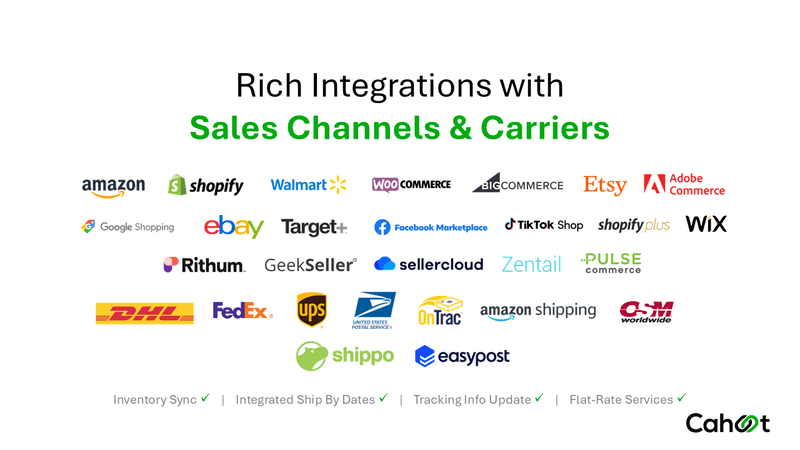
What really matters is the depth of integration between the channel and your shipping software. A simple integration may fetch orders from Shopify or Amazon into your shipping software, but fail to sync inventory or push back tracking information. With our integrations, Cahoot automatically fetches all information required to fulfill an order from the sales channel and intelligently pushes tracking information back to the channel. We also maintain an inventory sync, ensuring that you won’t accept orders on out‑of‑stock items, preventing overselling. The system also provides you with color‑coded alerts to quickly alert you to dipping inventory levels, enabling timely, proactive replenishment rather than reacting to customer frustration on canceled orders.
While our list of integrations might be comparatively smaller (but growing!), you won’t feel the difference—our API allows you to connect Cahoot with any other system you’re using. And as we’ve highlighted in the above sections (keep reading for more!), the system offers real cost savings and productivity gains on every single order.
Integration With Fulfillment Networks
Legacy Software – Cobbled Together and Disjointed
Legacy ecommerce shipping software works well if you’re fulfilling a small number of orders from your own warehouse location. However, if you’re partnering with multiple 3PLs, have a combination of in‑house and outsourced fulfillment, or are working with order fulfillment networks, cracks start to emerge. This stems from legacy software’s lack of native integration with fulfillment networks. Selecting the right shipping solution that seamlessly connects all fulfillment nodes is crucial for efficient order fulfillment and handoff to multiple carriers.
With tools like Flexport, you can’t expand nationwide coverage through their network while still running your own operations. For example—what if you wish to fulfill certain orders from your own warehouses if you have inventory and rates are cheaper? Flexport seeks to capture all volume even if it is inefficient to do so because they don’t integrate with all your fulfillment nodes. Many legacy software have a similar problem, where they find it difficult to manage a combination of in‑house and outsourced fulfillment. Rather than the system intelligently identifying which orders need to be outsourced, the Seller has to define this—which is time‑consuming and error‑prone.
Other forms of chaos can emerge when you’re trying to force a legacy shipping software and 3PL vendor (like Flexe, for example) to work together. The 3PL might require you to figure out which orders you’re going to ship with them, generate a file with all that information, and send it over to them. If you’re trying to participate in a program like Seller Fulfilled Prime, you have tight cut‑off times and very little room to maneuver. Imagine scrambling in the limited time you have between the cutoff time and the carrier pickup to collate and send over the information. You have to hope and pray that you haven’t made a mistake and that you’ve sent the information in time for your 3PL to process the shipments.
Lastly, let’s imagine a scenario where you’ve partnered with multiple 3PLs to achieve nationwide coverage. You have to either use the shipping software to print labels manually and hand that over to each of the 3PLs or share your credentials with all of them. This increases the number of parties your carrier credentials go to, increasing risk and vulnerability for your business.
If you’re experiencing some of these frustrations and want to migrate from your existing fulfillment partner, we know that it’s easier said than done. The process can be uncertain, confusing, and stressful for your business. We’ve put together a step‑by‑step guide to help you make the switch from one fulfillment partner to another, which you can read here!
Next‑Gen Software – Natively Integrated
Cahoot’s shipping software is tightly integrated with our order fulfillment network (having over 100 warehouses in the US). The system is also flexible enough to accommodate any fulfillment locations you run your own operations from—making handling scenarios where there is a combination of in‑house and outsourced fulfillment easy to manage. In such cases, the system is able to intelligently and automatically identify the orders where fulfillment is cheaper through outsourcing rather than being handled at your own warehouse. This frees up your time and ensures you’re getting the best deal on every order.
You also don’t need to spend time acting as the middleman between your shipping software and 3PL, where you drown in busy work generating files and handing them over to your fulfillment partner. With Cahoot, your fulfillment partners see all orders instantly and can print labels in one click. This agility and simplified workflow are just two of the reasons that help Sellers using our fulfillment network meet and surpass the challenging cut‑off times and demanding performance metrics that Amazon expects them to meet on Seller Fulfilled Prime.
It’s not just SFP where requirements are challenging. On the Walmart marketplace, merchants hoping to see increased conversion and sales must offer free nationwide 2‑day delivery with over 95% of orders expected to reach customers by the promised time.
And while you may scale to use many warehouses on the Cahoot network, none of our fulfillment partners know your carrier credentials—you share that only with us on the platform. This reduces risk and keeps your credentials safe while scaling nationwide fulfillment for you.
Information Security and Data Protection
Legacy Software – Poor Security and Privacy
Legacy ecommerce shipping software provides minimal data protection measures. Everything is fine if you own your own warehouses and are using these tools to fulfill orders. However, if you’re partnering with a 3PL (and they use legacy tools to process orders), you’ve handed over all your brand and customer data to them.
While you may sign agreements to prevent misuse, personally identifiable information about your customers (full name, address, email) and proprietary business data is openly available to your 3PL. While they may operate with good intentions, your confidential data is now at the mercy of their information security practices.
This increases the risk and exposure for your business, with little safeguards in place to protect sensitive information.
Next Gen Software – Robust Data Protection and Governance
With next‑generation shipping software, we ensure that only the essential information needed for order fulfillment is transmitted to Cahoot warehouses. We hold back or redact other information—for example, even on a shipping label, your fulfillment partner sees only the first initial of the customer’s last name—making it difficult for them to reconstruct personal customer data. And no data is copy/pasteable or exportable!
We also keep non‑essential customer, brand, and product information walled off and accessible only to you. This ensures that your data is secure and accessible to only one party—you.
Cut Costs with the Smartest Shipping On the Market
Guranteed Savings on EVERY shipment with Cahoot's AI-powered rate shopping and humanless label generation. Even for your complex orders.
Cut Costs TodayThe Future of Fulfillment is Here
Ecommerce logistics have evolved beyond the limitations of legacy shipping software. Today’s merchants need solutions that don’t just patch problems with complex rules and manual oversight but instead offer true automation, intelligence, and flexibility. The challenges of distributed fulfillment, multi‑channel sales, and increasing customer expectations demand technology that works for you—not against you.
Cahoot’s next‑generation shipping software isn’t just an upgrade; it’s a transformation. With intelligent automation, seamless integrations, and built‑in security, our system ensures that fulfillment is fast, cost‑effective, and effortlessly scalable. From real‑time order routing to automated packaging selection, every feature is designed to help you save time, reduce costs, and focus on growing your business rather than troubleshooting logistics.
The days of clunky, error‑prone software are over. The future belongs to merchants who embrace smarter, more efficient fulfillment—where technology does the heavy lifting, and businesses thrive. It’s time to leave behind outdated systems and step into a world where shipping works smarter, not harder.
Are you ready to experience the future of ecommerce fulfillment? The next generation of shipping starts now. If you’d like to learn more, check out our Next Generation Shipping Software Guide, Part 3: “Next‑Gen Warehouse Automation Software for Ecommerce: Fulfillment Efficiency”.
Frequently Asked Questions
Who uses shipping software?
Shipping software has features that can benefit various clients, including individual Sellers, ecommerce brands, retailers, and courier service providers. Feature‑rich software like Cahoot is autonomous and makes highly intelligent and scalable fulfillment and shipping accessible to retailers and brands of all sizes.
What is fulfillment optimization?
Fulfillment optimization is the process of determining the best options for sourcing and order fulfillment, which results in more efficient use of inventory and reduced costs.
What is a shipping platform?
A shipping platform helps you ship faster and cost‑effectively by organizing orders, offering pre‑negotiated shipping rates, enabling shipping rate comparison, and managing shipping workflow.
Ecommerce Shipping Challenges: The World Has Changed and Traditional Shipping Software is Not Enough
In this article
 16 minutes
16 minutes
- The ‘Old World’ of Ecommerce: Lower Complexity
- The ‘Old World’ of Ecommerce: Lower Costs
- Inefficiency in Operations Did Not Impact Margins
- The ‘New World’ of Ecommerce: High Operational Complexity
- Rising Costs
- Efficient Operations Essential for Margins and Profits
- Why Sellers Need to Switch to Next-Gen Ecommerce Shipping Software
- Summary
- Frequently Asked Questions
At Cahoot, we believe today’s ecommerce industry needs next‑generation shipping software. Selecting the best shipping software is crucial for enhancing efficiency and customer satisfaction. But before we talk about this amazing technology, it’s first worth asking – why is now the time? After all, legacy shipping software has been around for years. Thousands of Sellers are already using these tools – why make the switch?
We believe the present moment is perfect because ecommerce is dramatically different from how it looked just twenty years ago. The event that changed everything was the introduction of Amazon Prime in 2005. Just like the first iPhone revolutionized society’s experience with personal technology, Prime’s introduction transformed everything in the ecommerce industry. Sellers had to throw out old strategies and create entirely new ones to run their businesses.
The differences are stark, but we’ve summarized them in this table:
|
Parameter
|
Old World (1990’s, early 2000’s)
|
New World (ChatGPT – Present)
|
|---|---|---|
|
Sales Channels |
Just one |
Many, ever‑increasing |
|
Competitive Pressure |
Minimal |
Intense |
|
Customer Expectations |
Low |
Sky high |
|
# Warehouses |
Just one |
Four or more |
|
Carrier Mix |
Sign one contract |
Rate‑shop across multiple carriers |
|
Order Profile |
Small and simple |
Large and complex |
|
Carrier GRI |
Stable for decades |
Increasing |
|
Warehouse Staffing |
Easier and economical |
Wages keep going up |
|
Warehouse Leasing |
Less competition for space |
Heavy demand for scarce space |
Let’s begin by going back to the 1990s and journey through the early 2000s to see what the ‘old world’ of ecommerce looked like, for Sellers and customers. By understanding these changes, we can see how modern shipping solutions can turn challenges into a competitive advantage.
Let AI Optimize Your Shipping and Boost Profits
Cahoot.ai software selects the best shipping option for every order—saving you time and money automatically. No Human Required.
See AI in ActionThe ‘Old World’ of Ecommerce: Lower Complexity
In the olden days of ecommerce, life was simpler. Fewer channels to manage, fewer customer expectations, and less technological complexity meant uncomplicated logistics and order fulfillment processes that seem almost quaint by today’s standards.
Just One Channel to Manage
In the old world, Amazon was not the ‘everything store’ yet. It was largely a first‑party Seller of a few products like books, CDs, and DVDs. They did not face much competition – Walmart and Target restricted themselves to physical stores while shopping cart platforms like Shopify and BigCommerce did not exist. All this meant that Sellers did not have multiple sales channels to sell and take care of customers on. There was usually just one channel – their own website. With just one channel to support, it was also possible to operate with smaller‑sized teams.
Minimal Competitive Pressure
In the 1990s, online marketplaces did not exist. Amazon launched its third‑party marketplace only in 2000. In this environment, customers did not have a lot of choices. Sellers had to ensure they drew customers to their website through good marketing. Once they found you, it was not easy to comparison‑shop across different listings, brands, or platforms. There was little pressure on Sellers – it was unlikely a competitor would undercut you on price or beat you on shipping speed.
Low Customer Expectations
Perhaps most importantly, customers had no expectation of free and fast shipping. Before Prime’s introduction in 2005, customers had never tasted that experience. They were willing to wait 7–10 days for orders and covered the cost of shipping. Even if they did not like this experience, there was no social media platform at the time where they could share their frustration.
Single Warehouse, Single Carrier
The combination of lower customer expectations and sales through a single channel meant that Sellers could get by with operating from a single warehouse location, or two if they really needed the space. Customers living far away were okay with waiting as long as 1–2 weeks for their orders. Because customers were willing to cover shipping costs, Sellers saw no reason to compare and find the lowest rate among multiple carriers. It was easier to just sign a contract with one carrier. Why bother with cost optimization when the customer was paying?
Small and Simple Orders
In the old world, lower basket sizes (units per transaction) were common because customers were yet to trust making payments over the internet. The least risky way to test ecommerce was to just buy one item. As confidence grew, so did basket sizes. Multi‑Line, Multi‑Quantity (MLMQ) orders were less frequent, reducing warehouse packing complexity.
In summary, Sellers faced little complexity in running their businesses in the old world. They sold on a single channel, faced minimal competitive threats, and could easily satisfy customers. All of this translated into simpler operations across the shipping lifecycle.
The ‘Old World’ of Ecommerce: Lower Costs
We’ve taken a look at how operationally simpler it was to run an ecommerce business in the old world. But this was not the biggest advantage Sellers had – we’ll now explain how costs were lower back then.
Shipping Costs Were Cheaper
Carrier General Rate Increases held steady at 4.4%–4.9% through the 1990s and into the 2010s, which provided predictability and control over delivery costs.
Labor was Cheaper
In the old world, ecommerce did not require massive warehouse labor networks. Sellers could staff warehouses at wages that protected margins, as fewer large players competed for workers.
Warehouse Space was Cheaper
Warehouse demand was lower, so Sellers could find and lease space more easily and at lower rates. Fewer ecommerce operations competed for limited industrial real estate.
Across the fulfillment workflow, Sellers had cost certainty. Carrier rates, labor wages, and warehouse leases were steady, protecting margins without constant optimization.
ShipStation vs. Cahoot: 21x Faster, Real Results
Get the inside scoop on how a leading merchant switched from ShipStation to Cahoot—and what happened next. See it to believe it!
See the 21x DifferenceInefficiency in Operations Did Not Impact Margins
In a world without marketplaces, customers paid shipping fees and lacked social media to complain. There was no pressure to optimize operations or cut costs – margins remained protected without innovation.
The ‘New World’ of Ecommerce: High Operational Complexity
Prime’s launch in 2005 changed ecommerce permanently. Today’s Sellers operate in a vastly more complex environment.
Many Channels to Manage
Amazon’s third‑party marketplace, Walmart, Target, Shopify, BigCommerce, and others mean Sellers must sell and support customers across multiple platforms. This requires larger teams and integrated shipping solutions.
Intense Competitive Pressure
Online marketplaces give customers infinite choice. Sellers face constant threats of price undercuts, faster shipping, and knock‑offs. High shipping costs further squeeze margins.
Sky High Customer Expectations
Customers now expect 1‑day and 2-day free shipping. Cart abandonment soars without transparent free, fast options and social media amplifies complaints.
Multiple Warehouses, Multiple Carriers
To meet fast, free delivery, Sellers must distribute inventory across strategically located warehouses and rate‑shop among many carriers. Multi‑carrier shipping software automates this complexity.
Large and Complex Orders
Higher free‑ship thresholds and multi‑item carts drive more Multi‑Line, Multi‑Quantity (MLMQ) orders, requiring more varied box sizes and longer packing times.
Sellers today juggle multiple channels, unrelenting competition, and sky‑high expectations — reinventing every step of shipping with distributed fulfillment and intelligent software.
Rising costs
Complexity isn’t the only challenge — costs have also soared in the new world.
Shipping Cost is Expensive
Carrier GRIs jumped to 5.9% in 2022, 6.9% in 2023, and 5.9% in 2024 and 2025 — well above historical norms and inflation, leaving Sellers scrambling to adjust budgets and operations.
Labor is Expensive
Warehouse wages have risen as Amazon, Walmart, and Target compete for labor. In some regions, $20/hr has become the baseline, making staffing more costly for smaller Sellers.
Warehouse Space is Expensive
Warehouse rents soared during COVID‑19 and remain high as supply lags demand. Over 80% of U.S. warehouses were built before 2000, driving up lease rates.
Sellers now face rising carrier rates, labor wages, and lease costs, compounding the complexity of meeting modern customer demands.
Cut Costs with the Smartest Shipping On the Market
Guranteed Savings on EVERY shipment with Cahoot's AI-powered rate shopping and humanless label generation. Even for your complex orders.
Cut Costs TodayEfficient Operations Essential for Margins and Profits
In marketplaces, creative cost‑saving and resource pooling are essential. Sellers must optimize operations to preserve margins, stay competitive, and win.
Why Sellers Need to Switch to Next‑Gen Ecommerce Shipping Software
Legacy tools worked in the old world but add problems in the new one. They lack automation, cost savings, and multi‑channel flexibility, consuming time rather than simplifying workflows.
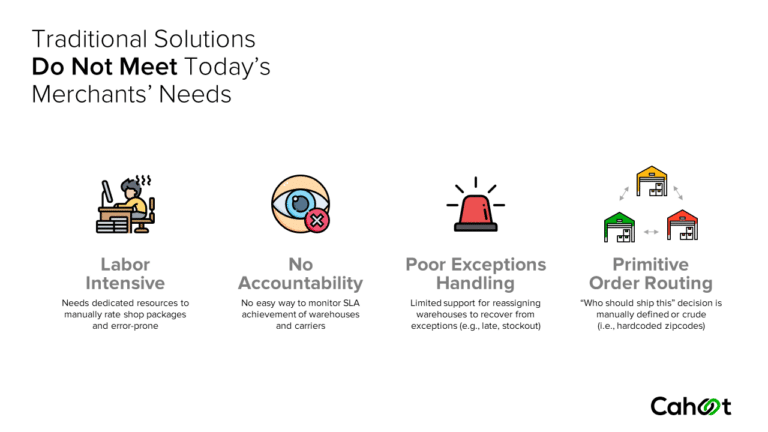
Choosing shipping software is crucial in developing an effective shipping and fulfillment strategy.
The next generation of ecommerce shipping software must solve three key problems:
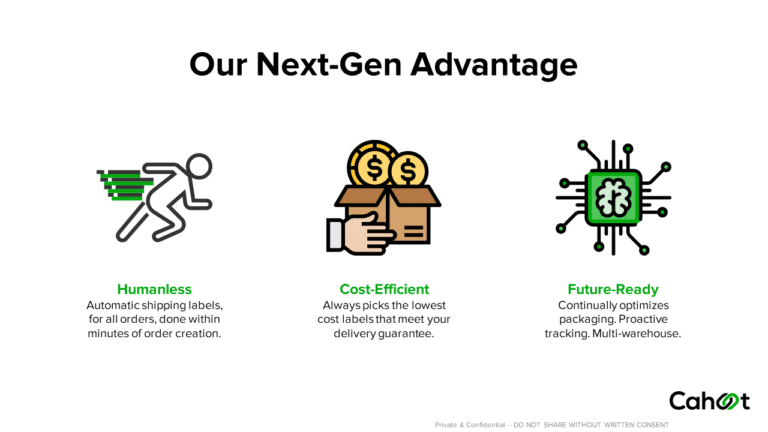
- Simplify the operational complexities of the new world of ecommerce
- Drive operational efficiencies and productivity gains for your team
- Generate meaningful cost savings across each step of the shipping and order fulfillment workflow
In the coming sections, we’ll dive deeper into each of these aspects and explain how Cahoot’s next‑generation software is purpose‑built to address these challenges.
Summary
Ecommerce has come a long way. The simplicity of the past has given way to a fiercely competitive, complex environment where every decision matters. Traditional shipping software is now a relic, not a reliable tool.
To thrive today, businesses need software that simplifies complexity, enhances efficiency, and drives down costs in ways the old world never required.
At Cahoot, we’re actively shaping the future of ecommerce fulfillment. In today’s market, the right technology isn’t just helpful—it’s essential.
If you’d like to learn more, check out our Next Generation Shipping Software Guide, Part 2: “Shipping Software for Ecommerce Fulfillment: The Next Generation of Shipping Simplified”.
Frequently Asked Questions
How can I reduce shipping costs for my ecommerce business?
Reducing shipping costs requires a multi‑faceted approach:
- Negotiate rates with multiple carriers rather than relying on a single provider
- Consider using regional carriers for deliveries within specific areas
- Optimize packaging to reduce dimensional weight charges
- Implement zone skipping by shipping bulk orders to carrier hubs closer to final destinations
- Use shipping software that compares rates across carriers in real time
- Offer local pickup options for customers in your area
- Consider flat‑rate shipping for certain product categories
What are the most common causes of parcel delivery delays?
Several factors commonly contribute to delivery delays:
- Weather events and natural disasters
- Carrier capacity constraints during peak seasons
- Customs clearance issues for international shipments
- Address errors or incomplete delivery information
- Staffing shortages at carrier facilities
- Vehicle breakdowns or logistical issues
- High volume surges (e.g., Black Friday/Cyber Monday)
- Last‑mile delivery complications in rural or hard‑to‑access areas
How can I reduce the environmental impact of my ecommerce shipping?
To make your shipping more sustainable:
- Use right‑sized packaging to minimize waste and reduce dimensional weight
- Choose recycled or biodegradable packaging materials
- Offer carbon offset options at checkout
- Consolidate orders when possible to reduce the number of shipments
- Partner with carriers that have environmental initiatives or electric vehicle fleets
- Implement a packaging reuse program for returns
- Consider local fulfillment options to reduce transportation distances
What should I do about rising return rates in ecommerce?
To address the challenge of increasing returns:
- Provide detailed product descriptions, measurements, and high‑quality images to set accurate expectations
- Implement a clear, easy‑to‑understand return policy
- Consider offering free returns as a competitive advantage
- Use analytics to identify products with high return rates and address underlying issues
- Implement a return merchandise authorization (RMA) system to streamline the process
- Consider restocking fees for certain categories to discourage unnecessary returns
- Offer virtual try‑on or AR features for appropriate products
How can I improve last‑mile delivery efficiency?
Improving last‑mile delivery, often the most expensive part of shipping, requires:
- Partnering with multiple carriers to diversify delivery options
- Implementing delivery management software to optimize routes
- Offering alternative delivery options like BOPIS (Buy Online, Pick Up In Store)
- Using lockers or pickup points in convenient locations
- Providing narrow delivery windows to improve customer experience
- Leveraging data analytics to predict delivery challenges in specific areas
- Considering micro‑fulfillment centers in urban areas for faster delivery
What are the best practices for international shipping in ecommerce?
For effective international shipping:
- Partner with carriers experienced in global logistics
- Understand customs documentation requirements for each country
- Use harmonized system (HS) codes correctly for all products
- Be transparent about duties and taxes that customers may need to pay
- Consider using a third‑party logistics provider specializing in international shipping
- Implement reliable package tracking for international orders
- Offer DDP (Delivered Duty Paid) options for a smoother customer experience
- Research import restrictions for products in your target markets
How can I manage shipping expectations during peak seasons?
To handle peak season shipping challenges:
- Plan ahead by increasing inventory and staffing well before peak periods
- Communicate realistic delivery timeframes to customers
- Consider implementing order cutoff dates for holiday deliveries
- Diversify carrier partnerships to spread volume across multiple providers
- Use shipping software that can automatically route orders to carriers with capacity
- Offer incentives for early shopping to spread out order volume
- Maintain transparent communication about potential delays
- Consider temporary local pickup options during extremely high‑volume periods

Turn Returns Into New Revenue

Top 7 Supply Chain Strategies for Making Free Shipping Profitable
In this article
 18 minutes
18 minutes
Free shipping has become an expectation in ecommerce, but for many businesses, it feels like an uphill battle against shrinking profit margins. The key to making free shipping work isn’t just about absorbing the cost, it’s about optimizing your supply chain to offset those expenses. From strategic inventory management to innovative fulfillment methods, businesses that refine their logistics can transform free shipping from a financial burden into a competitive advantage. In this guide, we’ll explore supply chain strategies that not only help sustain free shipping but also attract more customers without compromising your bottom line.
1. Minimize Inventory Storage With Just-in-Time Procurement
Just-in-Time inventory Stocking (JIT) is a common inventory management technique and a lean methodology to increase efficiency. A successful example is the apparel retailer Zara, with its “mind-spinningly supersonic” supply chain. Zara operates in an industry where inventory “spoils” quickly so they commit less than a quarter of a season’s line and produces about half of its line at the start of the season. The remaining? They were designed and produced during the season. Zara identifies popular styles and puts new similar designs in stores throughout the season while they’re still popular. With JIT, Zara improved its cash flow by reducing low-demand inventory while doubling down on what’s working.
Today, online Sellers can quickly gather and process historical sales data to make better demand predictions, but they are still just guesses. And yes, some safety stock is still needed as a buffer, but Sellers don’t need to dedicate as much space for storage as they had in the past. With proper data analysis and planning for smaller but more frequent procurement cycles, merchants can derisk the capital investment and direct the savings into their customer acquisition strategy.
Another application of JIT is cutting storage costs at 3PLs such as Fulfilled by Amazon. FBA is generally an excellent option, but only if the Seller can handle the storage costs (including peak season storage rates and aged inventory surcharges). By estimating their sales via FBA, Sellers can ship items regularly to FBA warehouses in quantities that will sell quickly. The remaining items can be stored in an inexpensive warehouse or their own facility.
Let AI Optimize Your Shipping and Boost Profits
Cahoot.ai software selects the best shipping option for every order—saving you time and money automatically. No Human Required.
See AI in Action2. Buy Online Pick Up In Store (BOPIS)
This is not strictly a solution for improving shipping costs, but it can help the customer get their order on their schedule at a lower cost to you. Buy Online Pick Up in Store (BOPIS) enables customers to pick up their items from one of your physical retail locations. The key here is to eliminate the shipping cost altogether by encouraging the customer to pick up their order.
Customers expect free and fast shipping and in some categories such as grocery, healthcare products, and some household items, fast shipping is a priority over free shipping. You may even want to offer a discount to encourage in-store pick-up which is a win-win for both you and your customer.
BOPIS bypasses the shipping process, cutting delivery from days to mere hours. Moreover, it can be a differentiator between you and a competitor, leading to higher top-line revenue. To minimize additional staffing needs and wait times, self-service package lockers can be used as a touchless way for customers to pick up their orders. Prepared orders are delivered to a locker inside or outside of your store that customers can open via an app or one-time password.
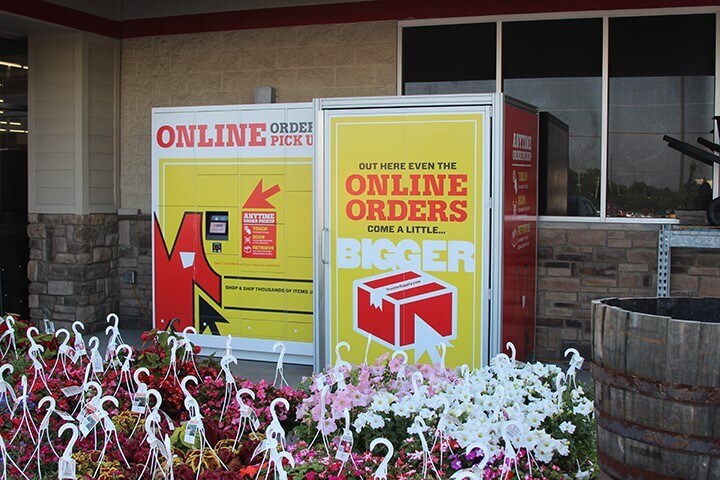
3. Zero Inventory Through Dropshipping
Dropshipping is a popular order fulfillment method used by many online Sellers. Dropshipping is an ecommerce business model that allows retailers to sell products without holding onto inventory. Instead, the retailer forwards customer orders to a third-party supplier who ships the product directly to the customer for a fee. Sellers don’t stock the items in their warehouse, effectively making it a zero-inventory business. When an order for a dropship item is received, the Seller purchases the item from a wholesale supplier who ships the order directly to the customer on behalf of the Seller. Sellers don’t handle or even see the product in the whole process.
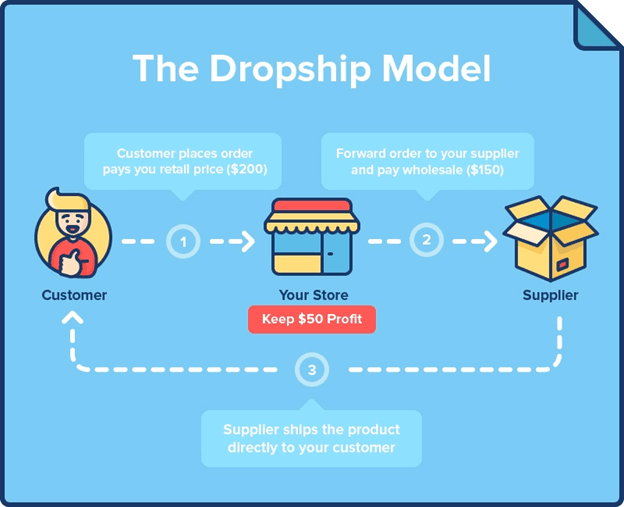
Dropshipping has a host of advantages as the online Seller does not require capital to pre-purchase inventory, does not need a warehouse to store it, and doesn’t even need expertise in order fulfillment and operations. However, the Seller must contend with low margins and no control over fulfillment. Therefore, dropshipping should be pursued by Sellers who intend to focus on building a diverse and creative product portfolio and concentrate on marketing to drive sales and revenue growth.
In the dropshipping model, the suppliers assume the risk of unsold inventory, though it’s minimal as they tend to have many affiliates selling their wares, and they pass the cost of logistics to the dropship Seller. Running an assetless business and maintaining low operational costs allows you to offer free shipping while concentrating on improving your sales without worrying about fulfillment.
Another form of dropshipping is cross-docking. In this ecommerce business model, instead of the wholesaler shipping orders directly to their affiliate’s customers, they bulk ship all the days’ orders to the merchant’s warehouse, who then fulfills all the customer orders. Cross-cocking tends to be used by merchants that already have the fulfillment infrastructure and the sunk costs of operating a physical ecommerce business. However, this strategy enables them to sell an expanded product catalog with lower product pricing and logistics fees, which results in higher profitability at a lower risk profile comparable to pure-play dropshipping.
4. Streamlining Your Supply Chain
The supply chain, in general, is not easy to manipulate. However, it’s a good idea to step back and reassess your supply chain for opportunities to improve your cost structure and allow you to offer free shipping.
Here are a few high-level recommendations to streamline your supply chain:
Optimize Sourcing: When you first open an online store, you would typically start with the easiest product sourcing options. As you scale and increase your bargaining power, though, you should look beyond the current sourcing and look for alternative suppliers that align with your selling strategy, which can be a cost leader, highly differentiated, or anywhere in between. You should also consider talking directly with manufacturers, if you’re not already (and using a broker or aggregator), and have a conversation about how you can bring your landed costs down. For example, sometimes overseas factories have preferred freight forwarders with much better ocean container rates than you might currently have available. Ask your 3PL/4PL if they can help with container shipping rates for the same reason…they can often get better rates by aggregating volume across clients.
Optimize Your Order Fulfillment Location: Ecommerce allows businesses to operate from anywhere they can get an internet connection. But as you scale, the inbound and outbound shipping becomes one of the most significant contributors to fulfillment costs. Moving your fulfillment location closer to the customer can save you money AND delight customers with faster shipping; middle of the country, for example (if more than one warehouse is not feasible, though Cahoot makes it easy to add warehouse locations to your existing setup to improve efficiency and reduce cost). On the other hand, being closer to vendors will help you reduce lead time and inbound costs. Both of these factors should be considered in deciding the optimal fulfillment center location. In addition, some locations also enjoy cheaper warehouse rents, cheaper labor costs, and may have government incentives. Taken together, an optimized fulfillment infrastructure can sometimes save substantial money.
Reduce Inventory: As an ecommerce business grows, the common reaction is to increase the size of the warehousing facility as well as the inventory on hand to meet the customer demand. But inventory is a cost trap and increasing inventory should be avoided as much as possible. Explore options such as reducing lead time from suppliers and getting rid of slow-moving inventory. Drastic measures such as liquidation and promotional sale of obsolete items should be standard practices in an industry with dynamic SKUs.
Consider Distributed Inventory: Distributed warehousing is a well-known solution for offering fast and free shipping. Whether leveraging a 3PL service such Amazon FBA, Multi-Channel Fulfillment (MCF), or a 3PL that has many locations, the benefits of distributing inventory to minimize final-mile shipping cost can often improve margins enough to be able to offer free shipping.
Multi-Channel Sales: Many studies have shown that the advantage of selling on many channels is huge. You reach more customers and the topline sales growth increases. This is not different from the conventional brand offering their product through the flagship store, departmental stores, specialty stores, or even outlets. In a similar vein, online shoppers have different channel preferences, and as such, different channels tend to command the attention and loyalty of different demographics. For example, Gen Z is more likely to shop via social channels and be drawn to influencer marketing while millennials prefer comparing different marketplaces and stores. Mix up your strategy to reach more eyeballs to grow revenue and earn the budget needed to cover free shipping.
ShipStation vs. Cahoot: 21x Faster, Real Results
Get the inside scoop on how a leading merchant switched from ShipStation to Cahoot—and what happened next. See it to believe it!
See the 21x Difference5. Optimize Shipment Packaging
Packaging is an often-overlooked opportunity to optimize shipping costs. Shipping costs are dependent on the size and weight of the package, and online Sellers should look to cut down on both while choosing the optimal packaging. Shipping “air” is throwing money out the window.
If you are using small cardboard boxes, you can cut down on weight and size both by going with poly bubble mailers (if the product can ship and deliver safely in one). Poly mailers are versatile and can accommodate different shapes and sizes of items while keeping the cubic volume and weights low. For example, a poly bubble mailer of size 7.5” x 12” can weigh just 0.5 ounces compared to 3.6 ounces for a small 6”x6”x4” box. Be mindful of only shipping small and strong items using poly mailers like books, cables, or kitchen gadgets. For apparel, some brands like Abercrombie & Fitch use un-padded poly mailers that cost and weigh even less than their bubble-padded brethren.
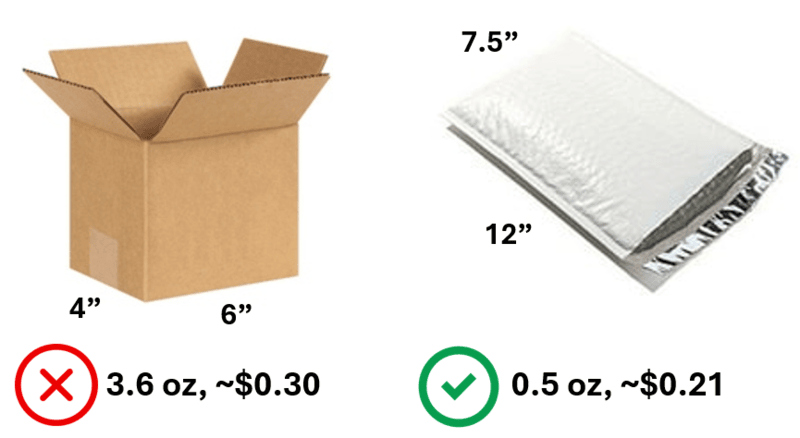
Another way to cut costs is to use carrier-provided boxes or packaging. All carriers give away free packaging for specific classes of mail. If you are shipping within that service, buying a separate box and affixing the label to it may be more costly than just going with the carrier-provided packaging.
Lastly, consolidate shipping supplies into the 20-ish sizes that are used most often and negotiate bulk discounts to help reduce your packaging costs. As a part of the exercise, take the time to optimize your packaging sizes around the frequency of multi-line/multi-quantity orders by SKU. In other words, figure out the most frequently ordered quantities for your products and purchase the packaging that is optimum for those orders. For example, you may be using the same package to ship multiple quantities of an item like soap. But if your box is designed to accommodate 5 units of soap, and your most commonly order quantity is 2 units, you should consider getting a separate smaller package and save money on the cheaper box or mailer and lower shipping cost. It increases complexity but will save money over time.
Smart cartonization software can be worth its weight in gold and could protect most of your shipping budget by itself by helping you automatically ship in the most economical packaging, minimizing the amount of shipped “air” and extra cost associated with the larger shipment. It can also help you track packaging inventory and alert you when you’re running low.
PRO TIP: Order packaging in bulk directly from overseas manufacturers for the most impactful savings. Buying from domestic suppliers allows you to buy Just In Time and minimize how much is spent at once, but the advantage of saving ~30 – 40% on shipping supplies may far outweigh the convenience of local sourcing in the long run.

6. Reuse Packaging from Inbound Orders
There are two main benefits of reusing supplies from inbound orders. The first is reducing waste (most used shipping supplies are sent to the landfill), and the second is reducing the supplies you need to buy. Packaging supplies like boxes, mailers, and void fill may look trivial when you consider the cost of 1 unit, but en masse, the costs can really add up because they apply to every order shipped.
If you offer fragile or sensitive items that require special packaging, chances are some materials from your inbound shipments can be reused. For example, reusing void fill materials like bubble wrap, peanuts, or crinkled paper can reduce your spending on new supplies while reducing waste. Of course, the amount that can be reused may vary from each Seller, but it’s generally a better idea to reuse before finally recycling them.
Inbound boxes can also be reused to save money here and there, especially if you’re shipping larger items. But be aware that customers can be sensitive to what their package looks like when it’s delivered. If a reused box has old shipping labels, stickers, tape, and/or writing on them, they may have a poor experience and may not buy from you again.
Cut Costs with the Smartest Shipping On the Market
Guranteed Savings on EVERY shipment with Cahoot's AI-powered rate shopping and humanless label generation. Even for your complex orders.
Cut Costs Today7. Warehouse Robots
Autonomous mobile robotics (AMR) is an exciting innovation in warehousing operations that helps reduce the costs of the picking, packing, and sorting parts of the fulfillment workflow. The robots eliminate the cost of labor from these steps while increasing efficiency. Fulfillment is faster and there are fewer mistakes when a robot conducts an operation. Currently, order fulfillment centers that have robots working alongside humans can transport many more items at once, and in some cases, the complete rack of shelves are brought to stations manned by humans, rather than humans going to the shelves to pick products.
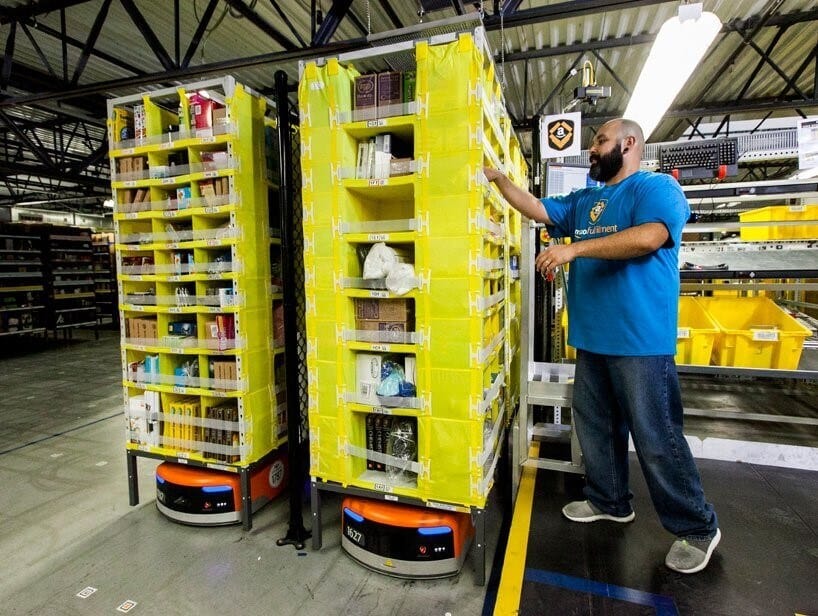
In other cases, robots speed-sort items by weight and volume to be packaged accordingly for different shipping services. This reduces human error while increasing fulfillment speed.
Kiva Systems and 6 River Systems have been two breakthrough AMR robot developers that have helped lower costs significantly for ecommerce Sellers. Kiva specializes in moving the entire shelf of products mentioned previously and was acquired by Amazon for the exclusive use of Amazon fulfillment centers. 6 River Systems was acquired by Shopify and is best known for their collaborative mobile robot named “Chuck” that uses sensors to navigate warehouses, avoiding obstacles and slowing down around people and equipment, guiding workers through their work zones to reduce walking and increase efficiency.
According to Amazon in 2016, Kiva robots cut the cost of warehousing by 20%, which amounts to more than $22 million dollars per warehouse per year. It is estimated that Amazon could save as much as $2.5 billion per year if the robots were deployed to all facilities.
Using robots helps businesses cut the time required to fulfill each order. At the same time, it has allowed better utilization of space by building narrower isles and getting rid of handling mechanisms that were required before.
For a warehouse without any robots, simple solutions such as Automated Guided Vehicles (AGV’s) can be an entry level solution. They are used extensively on factory floors and follow a predetermined path to transport materials without human intervention. This helps reduce manpower. Another solution could be Autonomous Mobile Robots (AMR’s) that can identify their environment and information on packages, where items are located on shelves, and can be used for picking, putaway, sorting, counting, and replenishment tasks, reducing human intervention even further.
Summary
Successful ecommerce businesses don’t just offer free shipping, they master the logistics behind it. Whether through just-in-time inventory, dropshipping, or regional fulfillment centers, the right logistical decisions can make all the difference. Businesses that stay ahead in supply chain optimization will not only keep shipping costs under control but also position themselves for scalable, long-term success. The key is to continuously refine operations, embrace emerging technologies, and find efficiencies that drive long-term savings that can be reinvested into a growth strategy that includes free shipping. With the right approach, free shipping can become a sustainable and profitable part of your business.
Download The Ultimate Guide to Profitable Free Shipping
Frequently Asked Questions
How to lower supply chain costs?
Companies can reduce their supply chain costs by working with suppliers, choosing specialist logistics and warehousing firms, using technology to boost efficiency, and finding ways to reduce waste such as materials or time.
How to reduce the cost of supply chain?
Streamlined processes, efficient transportation, and optimized inventory management all contribute to significant cost savings. By minimizing waste and maximizing resource utilization, businesses can lower expenses and boost profitability.
What is an efficient supply chain?
Supply chain efficiency focuses on delivering quality products to customers at the lowest possible cost by maximizing such resources as materials and labor. Supply chain responsiveness focuses on customers’ expectations and strives to provide a quality product faster.
What is cost control in supply chain management?
It involves optimizing operations to deliver maximum value with minimum waste, thereby impacting the total cost of the products or services. Supply chain managers and leaders have a pivotal role in analyzing and optimizing the supply chain.
Where can I reduce supply chain costs?
Some examples include: avoid minimum order quantities, know your reorder point, get rid of obsolete stock, implement Just-in-Time inventory management practices, and use consignment inventory (or a drop shipping business model).

Turn Returns Into New Revenue

Top 12 Shipping Strategies For Making Free Shipping Profitable
In this article
 31 minutes
31 minutes
- Structured Negotiation with Multiple Carriers
- Convince Suppliers to Use Your Shipping Account
- Use Trade or Group Association Discounts
- Use Shipping Label Software
- Maximize Ground Shipping Services
- Try Amazon Shipping
- Take Advantage of ‘Hybrid' Shipping Services
- Consider a Regional Carrier or Regional Rates
- Avoiding Residential Address Surcharges
- Use Zone Skipping for High Volume Zones
- Use International Freight Forwarders to Fulfill International Orders
- Selling Internationally through Full-Service Cross-Border Solutions
- Summary
- Frequently Asked Questions
For ecommerce sellers, shipping is more than just getting a package from point A to point B — it’s the invisible backbone, quietly shaping customer satisfaction, operational costs, and, ultimately, your bottom line. Yet, as carriers raise their rates and consumer expectations for fast, free shipping continue to rise, businesses are left with a difficult choice: absorb the costs, pass them on to customers, or find a smarter way to optimize logistics to avoid sacrificing profit.
The good news? You don’t have to choose between customer satisfaction and profitability. With the right shipping strategies — whether it’s negotiating better carrier rates, using regional shipping options, or leveraging technology to streamline fulfillment — you can reduce costs while maintaining service quality. This guide explores key tactics to help businesses of all sizes take control of their shipping costs and turn logistics into a strategic advantage.
1. Structured Negotiation with Multiple Carriers
Shipping costs are easily the biggest component of your order fulfillment prices, worse if you happen to sell big bulky items. But the problem is, every year the carriers increase their rates while you have to keep prices low to stay competitive. Giants like Amazon can afford to subsidize their deliveries, but how are you to offer free shipping as a small business?
Well, a lot.
With Amazon’s transportation business, Amazon Shipping, enabling the company to reduce its reliance on USPS, UPS, and FedEx, these national carriers are doing all they can to retain their customers. For these carriers, every bit of business is important to retain shareholder value. This presents you with the perfect opportunity to pull up your socks and put on your negotiation cap.
The key is shopping around and negotiating with your carrier Account Manager (if you have one). Chances are you’ll get a better deal if you can convince carriers that you are a reliable source of repeat business. First, you’ll have to gather what your business’ shipping needs are and then you formulate a formal Request for Proposal (RFP). This RFP document will help carriers assess your needs and tailor a deal for you. It’s easier to distribute this document across multiple carriers rather than setting up one-on-one discussions with everyone too early in the negotiation. For more details, Logiwa does an excellent job of explaining how to go about it.
There’s a merit to being well-prepared for your negotiation. Be sure to really understand what sort of shipping profile your business has, ranging from:
- Breakdown of your historical shipping speeds (Ground, Express, Consolidation)
- Shipment weights and dimensional weights
- Percentage of residential vs. commercial deliveries, including weekend deliveries
- How often errors and corrections like address changes and incorrect weights occur

Having a clear sense of what your business really needs helps you avoid paying for features you don’t really need in your deal with the carrier and makes sure that you do negotiate for the items that you use the most. Pulse Commerce also has a great in-depth article on how you can negotiate better rates using shipping data and analytics.
Let AI Optimize Your Shipping and Boost Profits
Cahoot.ai software selects the best shipping option for every order—saving you time and money automatically. No Human Required.
See AI in Action2. Convince Suppliers to Use Your Shipping Account
You might be leaving money on the table if you use your shipping account for only outbound shipments from your warehouse(s). Most ecommerce Sellers get inbound inventory shipments from their suppliers. If you’re one of those merchants, it would be a good idea to convince your suppliers to send them using your shipping account, meaning the carrier will bill you directly for the inbound shipment. This translates to more shipping volume on your account, and if we learned anything from the first tip, the more volume you have the more bargaining power you’ll have as well. In addition, you might already hit a higher volume discount even before further negotiations.
There are third-party contract negotiation/optimization solutions such as TransImpact, ShipSigma, and ShipRx, (among many others), that will analyze your shipping history for you, identify the most commonly used services, sizes, weights, and accessorial fees, and then help you negotiate your best agreement. With over 600 negotiable terms in a UPS contract, for example, outsourcing the work could make sense.
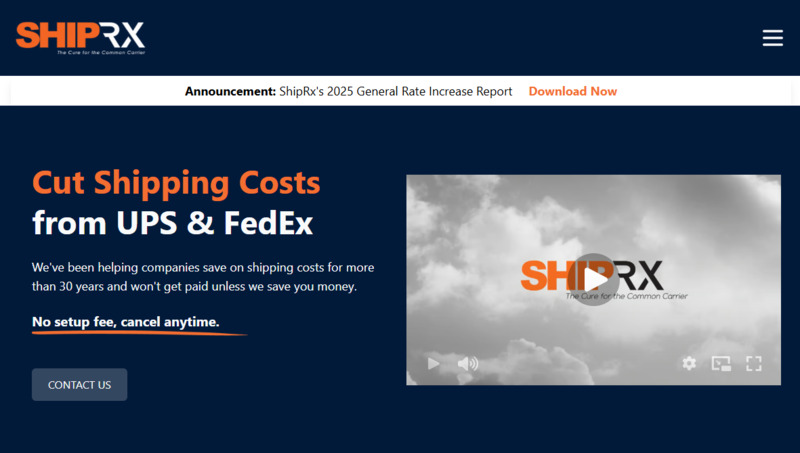
Lastly, make sure to request that any outsourced fulfillment partners also use your negotiated accounts. Modern ecommerce order fulfillment providers such as Cahoot have a Bring Your Own Carriers option that allows you to keep your volume on your accounts while outsourcing the fulfillment logistics to increase efficiency and lower cost.
A simple solution would be to set up a process through which suppliers can provide you with all the shipment details and you can provide them with the shipping labels. You can email those labels directly to them, and they can be printed, and packages can be handed over to the carrier.
3. Use Trade or Group Association Discounts
Trade organizations such as the American Bar Association or the Outdoor Industry Association are not just good for their annual conferences and shows, but they also offer a lot of advantages to their members. One of them is working together to help businesses reach scale when buying goods and services.
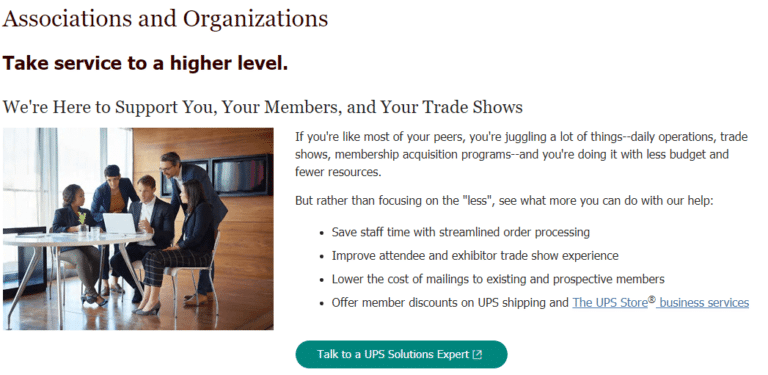
image courtesy: UPS
Shipping carriers often have relationships with many professional associations and offer member discounts. Depending on the size of the organization, you could be eligible for discounted rates of up to 50 percent with UPS and FedEx.
While UPS does not advertise the associations they offer discounts to, don’t hold back from asking your Account Manager or your association, whether you qualify. By aggregating your volume with that of your industry peers, you may just find that you’ve been missing out on a lucrative opportunity.
4. Use Shipping Label Software
There are two types of shipping label software we’re talking about in this tip: multi-carrier channel-integrated shipping label software such as Cahoot or ShipStation, and specific carrier websites that support online shipping label generation, such as USPS.
Shipping label software is an easy opportunity for Sellers who are new to ecommerce and/or haven’t reached the volume to qualify for negotiated rates or discounted 3PL services yet to get access to discounted rates. Cahoot, ShipStation and many others aggregate their shipping volume to negotiate big discounts with several carriers each and pass the savings onto their customers. Alternatively, you can print your shipping labels at usps.com instead of at the post office counter and enjoy the same reduced rates (commercial program) available to larger shippers. Discounted USPS shipping labels can also be purchased through authorized USPS postage services like Endicia which claims savings of up to 40%, whereas Stamps.com can save you up to 30% on Priority Mail services. Online shipping with USPS also saves you from carrying all your packages to the post office with its free parcel pickup service.
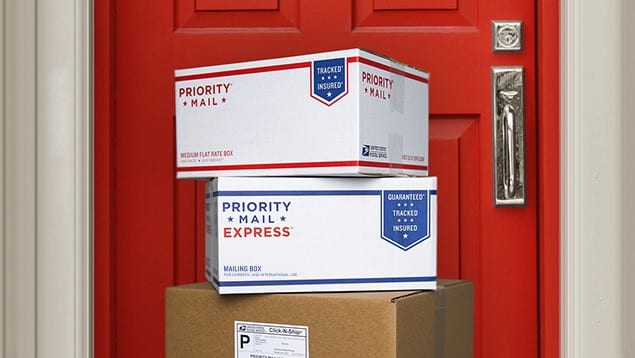
image courtesy: UPS
Using USPS is ideal only if you are shipping packages weighing less than two pounds. For heavier packages, it’s less expensive to go with the private carriers (FedEx and UPS). For private carriers, it’s best to open an account online rather than shipping them through the physical stores (e.g. The UPS Store and FedEx Office). These carriers reward the Do-it-yourself mentality! If you pay & print labels online and drop them off at the carrier store, you can save up to 50% compared to doing all of this directly at the carrier’s store.
5. Maximize Ground Shipping Services
Free shipping is a great motivator for shoppers even if it means getting the delivery a little later in some cases. According to a study published by McKinsey & Company in 2025, 95% of online shoppers prefer free standard delivery over paid expedited delivery, and 8 out of 10 shoppers are willing to wait even longer for a free shipment. Therefore, using the cheaper ground shipping option may be your best bet.
Similar to tip #3, which aims to add enough margin to the shopping cart subtotal to make free shipping viable, an alternative is to provide free shipping but at a slower speed. Consider offering a no-rush delivery option for customers willing to wait for free shipping. Ground shipping uses more economical long-haul trucks to move packages around the country rather than expensive air cargo, reducing the carrier’s costs and giving you better margins.
Here are some possible options for ground shipping from different carriers:
- FedEx Ground: Offers delivery to commercial destinations with the certainty of delivery on a pre-informed day. They deliver within typical business hours and the delivery timeline is between one and five days.
- FedEx Home: This is like FedEx Ground but with deliveries to residential addresses. It is slightly more expensive and has a wider delivery window, between 9 am and 8 pm. The delivery duration is between one and five days.
- UPS Ground: UPS Ground shipping is a ground delivery service that guarantees delivery on a specific date, similar to FedEx.
- USPS Ground Advantage: USPS Ground Advantage is an affordable and reliable service for sending packages to all 50 states, U.S. military bases, territories, possessions, and Freely Associated States. The delivery timeline is published as between two and five business days, but packages can be delivered in as little as one day. Rates are lower if shipping labels are purchased online as shippers benefit from commercial rates rather than retail rates if purchased inside a post office.
Check out this price comparison table using February 2025 rates for the ground shipping services described above to help determine which carriers to consider. Keep in mind that historically, UPS and FedEx have had more reliable on-time delivery:
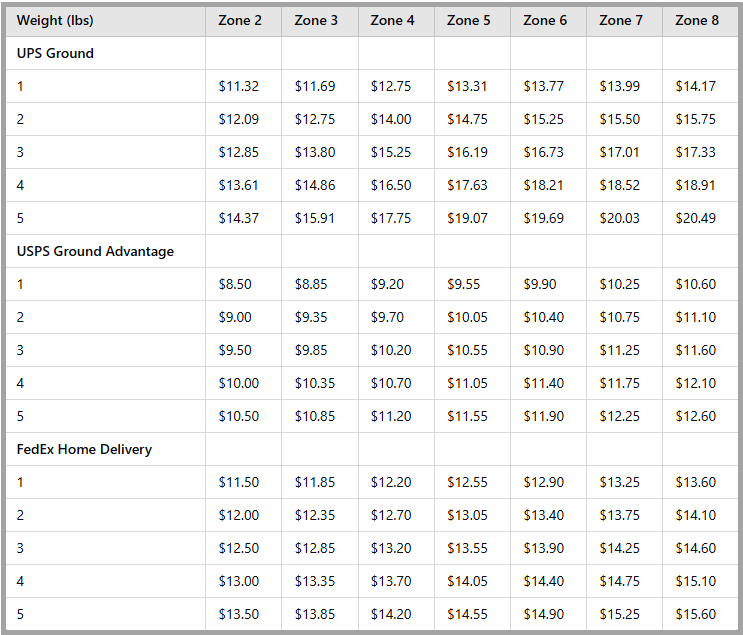
ShipStation vs. Cahoot: 21x Faster, Real Results
Get the inside scoop on how a leading merchant switched from ShipStation to Cahoot—and what happened next. See it to believe it!
See the 21x Difference6. Try Amazon Shipping
Amazon Shipping is the newest last-mile shipping service meant to complement and partially replace existing national providers like UPS, USPS, and FedEx. It started by servicing only Fulfilled by Amazon (FBA) orders but has since been aggressively recruiting high-performing retailers to use Amazon Shipping at low teaser rates. If you are a top-rated Seller on Amazon and haven’t received any such invitation, you should reach out to your Amazon contact and try to make your case for it as it offers reliable delivery in two to five days to the majority of the contiguous United States. Pickup and delivery is available seven days a week with no additional weekend delivery fees or residential surcharges.
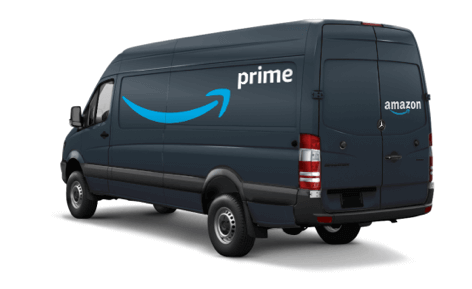
Amazon Shipping uses Delivery Service Partners (DSPs), that is, freelance partners delivering on behalf of Amazon, while Amazon provides the technology needed for drivers to successfully pick up and deliver packages. By awarding delivery routes to DSPs, the management of the fleet and employees is borne by the outsourced companies, the dependence on traditional shipping carriers is eliminated, and Amazon can offer fast deliveries at lower costs than the unionized national carriers.
Amazon Shipping can sometimes be cheaper than the discounted shipping rates that Amazon offers to merchants using its FBA program. With total control over operations and a contracted workforce, Amazon can run an efficient and lean operation and pass on incredible savings to its participating merchants.
7. Take Advantage of ‘Hybrid’ Shipping Services
Hybrid services are a great example of how competitors work together to increase value by working in their areas of expertise. The most expensive component of shipping is the last-mile delivery. And the ground distribution network, especially in residential areas, has never been strong for large national carriers such as UPS and FedEx. So they work together with USPS to offer ‘hybrid’ services; the moniker originates from this collaboration, (aka ‘co-opetition’, that is, cooperative competition), which makes it possible to leverage what each does best to maximize efficiency and lower costs.
Carriers supporting consolidation services collect large volumes of packages, sort them in their own ground network facilities, consolidate them, and then inject them into the USPS network way downstream for delivery to the doorstep (that USPS is already touching every day), effectively outsourcing the final delivery.
Consolidation services are using the USPS Parcel Select service that has a delivery timeline between two and seven days, however, these shipments are lower priority and can sometimes take up to 10 days to deliver. So while much less expensive than UPS, FedEx, and USPS Ground services, packages can take 2 to 5 days longer to deliver to your customer. If your business offers recurring subscription purchases like dog food, you may not care how long transit takes, you just need to ship a few days earlier to meet your customer’s subscription expectations.
Hybrid shipping services are ideal for packages weighing less than 10 pounds (the lighter, the better), and best for residential, non-urgent, low-value domestic deliveries. Outside of this sweet spot, the prices for hybrid services may be comparable to other service types but hybrid services will take longer to deliver.
Packages heavier than 10 pounds should use standard ground shipping or Priority Mail Flat Rate box (because if it fits, it ships; up to 70 pounds, regardless of distance). And the Priority Mail delivery expectation is 1 – 3 days, making it a good option for shipments that need to arrive quickly but don’t require expensive overnight services.
See the 2025 FedEx Ground Economy delivery details and package weight and size limits:
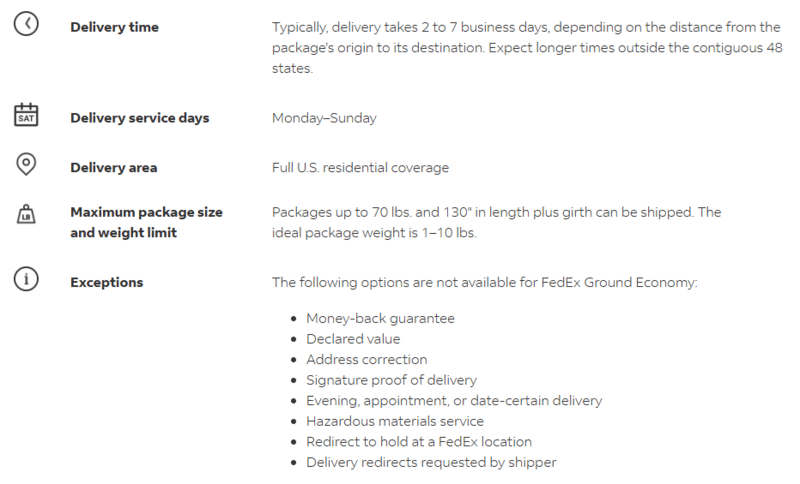
image courtesy: FedEx
Here’s a UPS Mail Innovations graphic depicting how consolidation services ‘skip’ steps along the USPS sortation and delivery journey and get injected into the USPS network much further downstream, often one step before residential delivery:
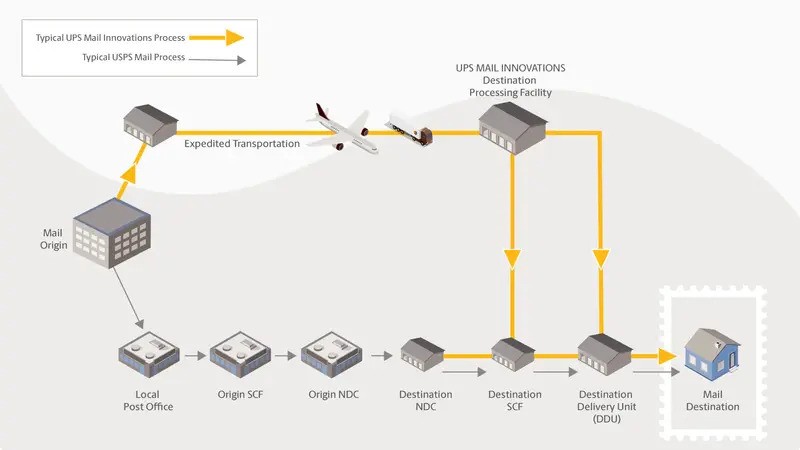
image courtesy: UPS
Note: there are substantial minimum volume commitments to qualify for free pickup of packages by many of the consolidation services. Some piggyback on existing infrastructure, while others require separate workflows and must be kept separate from standard ground shipping services. Make sure to understand how your workflows will change when implementing these services.
8. Consider a Regional Carrier or Regional Rates
Some carriers operate in specific regions only; they are often less expensive compared to FedEx or UPS because they operate in a smaller area and use mainly ground transportation for delivery. By avoiding expensive air cargo, ground services don’t have to help absorb some of the overall operational costs. Their delivery networks are typically limited, but many of them cover a wide range of states with fast deliveries. Some of the prime examples of such carriers are:
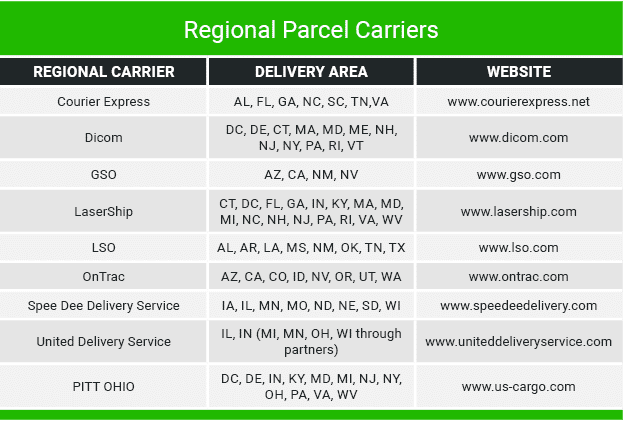
Note: LaserShip and OnTrac merged and now operate under the name OnTrac.
Regional carriers typically provide better services than national carriers because they specialize and operate in a smaller area. They can provide same day or next day delivery options for deliveries that usually take a couple of days through FedEx and UPS.
They are more flexible in accommodating the requests of online Sellers too. Since they have a smaller base of customers and fewer packages to handle, it is not uncommon for them to provide later pickup time and earlier deliveries.
Cut Costs with the Smartest Shipping On the Market
Guranteed Savings on EVERY shipment with Cahoot's AI-powered rate shopping and humanless label generation. Even for your complex orders.
Cut Costs Today9. Avoiding Residential Address Surcharges
UPS and FedEx, the biggest national carriers, add a surcharge for all shipments to residential addresses. A carriers’ definition of a residential addresses isn’t always clear, but you can reduce some of your costs by planning around residential surcharges and encouraging customers to ship to their office building or a commercial pickup location (e.g. The UPS Store, FedEx Office, or a Pickup Locker). Benefits to the customer include:
- Accurate Delivery: Carriers don’t leave packages at the wrong address by accident, creating a WISMO (Where is My Order) customer service event.
- Improved Successful Delivery Rate: Helps people living in densely populated, urban areas such as apartment buildings.
- Security and Safety: Office buildings often have secure access and reception areas, reducing the risk of packages being lost or stolen compared to home delivery.
- Convenience: Packages can be received during business hours without needing to adjust a personal schedule or worry about missed deliveries.
- Immediate Access: Packages can be opened and inspected immediately upon arrival, which is helpful for checking for damage or errors.
- Reduced Delivery Attempts: Since someone is usually available during business hours, there are fewer chances of multiple delivery attempts, which can delay receipt and require pickup from inconvenient carrier locations.
- Less Disturbance at Home: This can be beneficial if they work from home or prefer not to have deliveries to a residence (for example, dogs may start barking and disturb a work phone call in progress).
UPS defines residential delivery as delivery to a location that is a home, including a business operating out of a home.
FedEx adopts a similar definition of a residential address:
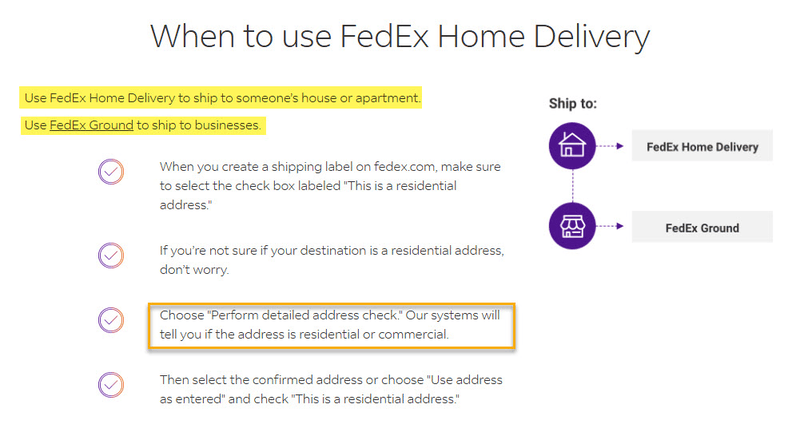
image courtesy: FedEx
You can find the complete list of surcharges for FedEx and UPS on their site here.
Carriers impose residential surcharges because, to them, it is more expensive to deliver to a residence. A courier can deliver many packages to many different businesses in a single trip to a commercial building, whereas typically a courier makes one delivery to a single residential address at a time.
It’s important to choose the right shipping service to avoid surcharges. For example, FedEx Ground is cheaper than FedEx Home Delivery, but when shipped to residential addresses, the shipper will incur a ~$4 fee that will be reflected on the invoice. Be careful not to make too many mistakes or your carrier account and negotiated rates may be negatively impacted.
Another way to avoid residential surcharges is to utilize hybrid services such as UPS SurePost and FedEx Ground Economy, (or even Amazon Shipping), all of which do not impose this fee. Also, keep in mind that hybrid services do not give you a guaranteed delivery day and take longer to deliver by design.
Also, analyzing your past shipments will help you understand just how much of a problem residential surcharges are for you so you can take action accordingly. The surcharges may not seem like much, but when shipping high-volume and utilizing a less ideal carrier/services mix, they can add up quickly.
The solution is to separate your deliveries for home and commercial addresses and select delivery methods accordingly. While we can’t force the customers to only ship to a commercial address, you can make it easier to create the correct shipping labels (and make fewer mistakes) by asking the customer to identify in the address type if it is a commercial or residential address. Lastly, there are intelligent shipping software solutions like Cahoot that provide accurate address type identification using USPS and UPS databases, along with auto-rate shopping across all carriers and services to help you ship as economically as possible.
10. Use Zone Skipping for High Volume Zones
Zone skipping is a practice of consolidating orders and shipping them together to a destination region. From there on, the parcels can be shipped individually within the destination region. The shipping cost is often calculated by the number of regions or ‘zones’ a package travels through to reach the destination. Through zone skipping, the parcel is injected into the carrier’s network directly into the destination zone. Hence, the term Zone-Skipping.
This is ideal for online Sellers with a large volume of sales within a region. If you have close to a truckload of orders from a zone every day, zone skipping is for you. Your objective should be to get your orders as close to the destination as possible in fewer stops and sorts, where the shipping carrier can pick up and deliver each package to the final destination.
For example, if you are based out of Detroit (Zone 1) and have a considerable volume of orders from Southern California (Zone 8); if you ship all your orders directly, you will pay high shipping rates for Zone 8 for all orders. With zone skipping, you can bundle all your orders going to Southern California every couple of days and send them by truck in bulk. Once in Southern California, packages are picked up by the shipping carrier and shipped within the Zone at lower rates. You save big because paying for bulk transportation is far cheaper than the difference between zone 8 and zone 1 shipping rates per unit.
Here is a snapshot of how zone skipping saved money for two online merchants:
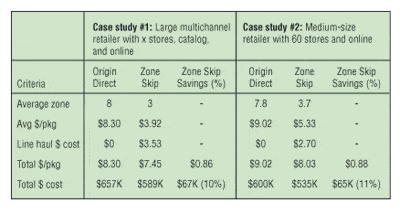
image courtesy: MultiChannelMerchant.com
USPS Parcel Select is a great complementary service to zone skipping. Under Parcel Select, Sellers drop their packages in bulk at a postal facility as close to the destination as possible. Not only, do they save on zone-skipping, but Parcel Select also offers an additional discount for bulk shipping, similar to the hybrid shipping services mentioned above. But in this case, you’re dealing directly with USPS without the intermediaries.
11. Use International Freight Forwarders to Fulfill International Orders
Shipping international from the US can be a costly affair. Besides, international shipping can be an operational headache too. There are several things to consider. You need enough manpower and time to manage the different aspects of international shipping that aren’t considerations for domestic shipments.
International Freight Forwarding services carry out the logistics operations on behalf of a firm. These generally involve, as the name suggests, large orders. But these days, a lot of freight forwarding agencies offer services tailored to ecommerce Sellers, for example, less-than-container load (LCL) services, where they bundle your parcels with other parcels to fill pallets and containers, which are then delivered to your destination country via the conventional freight network. At the destination, the last-mile delivery is done by the local postal service in the destination country.
This end-to-end process is taken care of by the freight forwarder. Online Sellers enjoy savings since they get a bulk freight discount for what is essentially parcel shipping, and only have to deal with their freight forwarder. Freight Forwarders also provide support for calculating real-time duties, taxes, and other governmental fees to present itemized final prices to customers as well as costs to Sellers before the sale is made.
In some cases, if you have an order fulfillment provider like Amazon FBA in the destination country, a freight forwarder ensures that your items reach the fulfillment provider’s warehouses.
A good example of such a service is DHL eCommerce (formerly Global Mail) which provides a solution tailored for online Sellers.
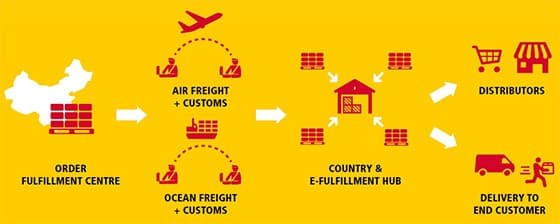
12. Selling Internationally through Full-Service Cross-Border Solutions
While domestic sales and fulfillment can be taken care of using the shipping strategies we’ve discussed so far, selling and delivering to customers in other countries is a whole other ball game.
Aside from accurately calculating shipping charges and various import fees, there are a few other things that an online Seller needs to do. To avoid surprises, your customer must understand your product’s pricing and the different tariffs included in the final landed cost. Additionally, having familiar payment options at checkout would reduce hesitancy, for example, by allowing payment via China Union Pay, WeChat, or Alipay.
Thankfully there are cross-border solutions such as Global-e’s BorderFree and International Localized Checkout that provide a comprehensive solution for selling to international customers. An end-to-end solution typically includes:
- Localization of your product content and checkout pages in locale-specific language, UI, and currency.
- Calculation of duties, taxes, and import fees for transparent final pricing to customers before the order is placed.
- Presenting and processing country-specific payment options.
- Efficient international order fulfillment using freight forwarders and other service providers.
The following checkout page is an example of an online store that uses Global-e to display the page to a Chinese customer buying from a Seller located in Australia:
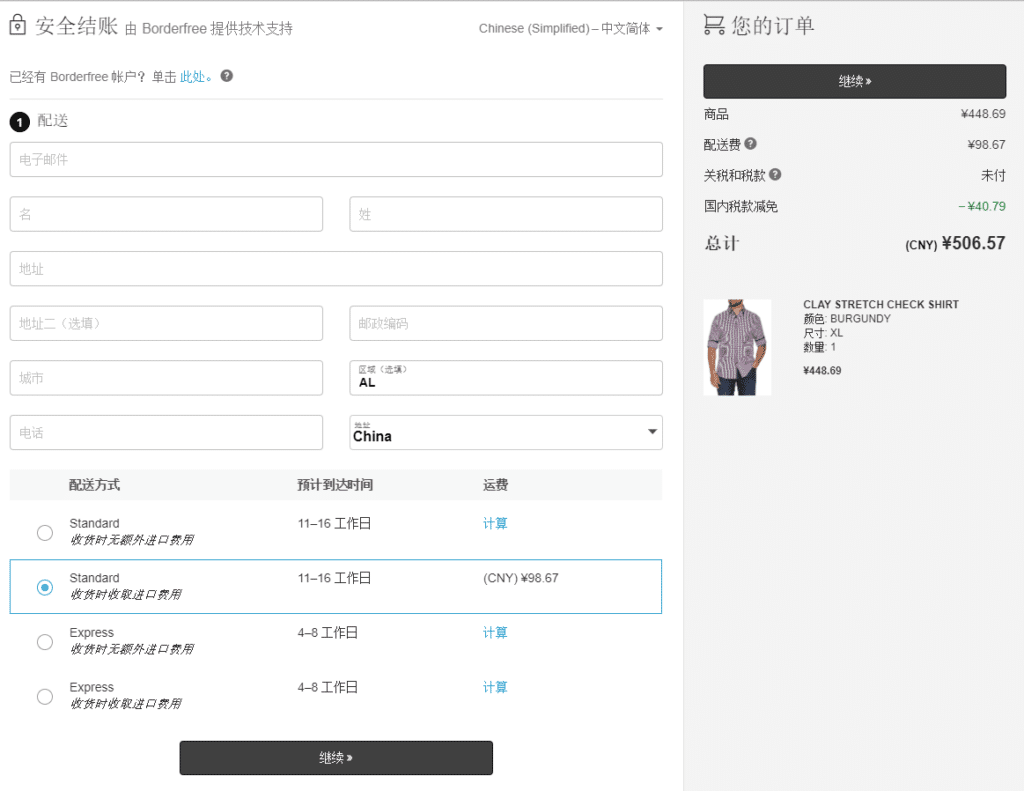
Summary
Mastering shipping isn’t just about saving a few dollars per package — it’s about building a sustainable and profitable business that encourages customer loyalty while building a scalable foundation for future growth. The strategies outlined here, from negotiating better carrier rates to leveraging hybrid shipping solutions, are designed to help you take control of your logistics instead of letting them control you. In an era where customer expectations are sky-high and operational costs are constantly climbing, businesses that optimize their shipping program can carve out an undeniable edge over competitors. Whether you’re a growing e-commerce brand or an established retailer, the right approach to shipping will not only protect your margins but also ensure a seamless experience for your customers. The key is to stay adaptable, explore new opportunities, and continually refine your strategy — because in shipping, as in business, the smartest players always come out ahead.
Download The Ultimate Guide to Profitable Free Shipping
Frequently Asked Questions
What is the most cost-effective shipping method?
Generally speaking, for standard delivery service, (1 – 5 days), USPS is the cheapest option for smaller, lighter packages that are traveling short distances, while UPS and FedEx tend to be cheaper for larger packages traveling longer distances. However hybrid shipping services where consolidator carriers accumulate and inject mass quantities of packages into the USPS network for final mile delivery take much longer to deliver, but can offer substantial savings over standard delivery services.
Does offering free shipping increase sales?
Yes, offering free shipping can increase sales. Studies show that free shipping is a key factor in purchasing decisions.
What is free shipping?
Free shipping is a marketing strategy used by online stores that allow shoppers and customers not to have to pay an additional fee when placing orders for particular items. From the online shopper’s perspective, getting no additional cost added to an item purchased makes shopping much easier.
Who really pays for free shipping?
There Is No Such Thing as “Free Shipping”. It is a fact that shipping costs are being paid for, whether consumers know it or not. Customers ultimately pay for this perk, even if it is not specified in their online shopping cart. The cost is lumped in with the final price of the goods they buy.
What is a good free shipping threshold?
Knowing how much an average customer spends per transaction can provide a better idea of what a business’ minimum order value for free shipping should be. A free shipping threshold should be about 30% above the average order value.
What is the psychology of free shipping?
The psychology of free shipping shows that customers often perceive free shipping as a better deal than a discount. This perception increases the perceived value of a purchase and encourages higher spending.
How do businesses make money with free shipping?
Free shipping can help boost sales. Shoppers believe they’re getting a better deal when they don’t have to pay for shipping costs which can help increase cart sizes. Customers will buy more to get free shipping and will take their business elsewhere if they can’t.

Turn Returns Into New Revenue


